
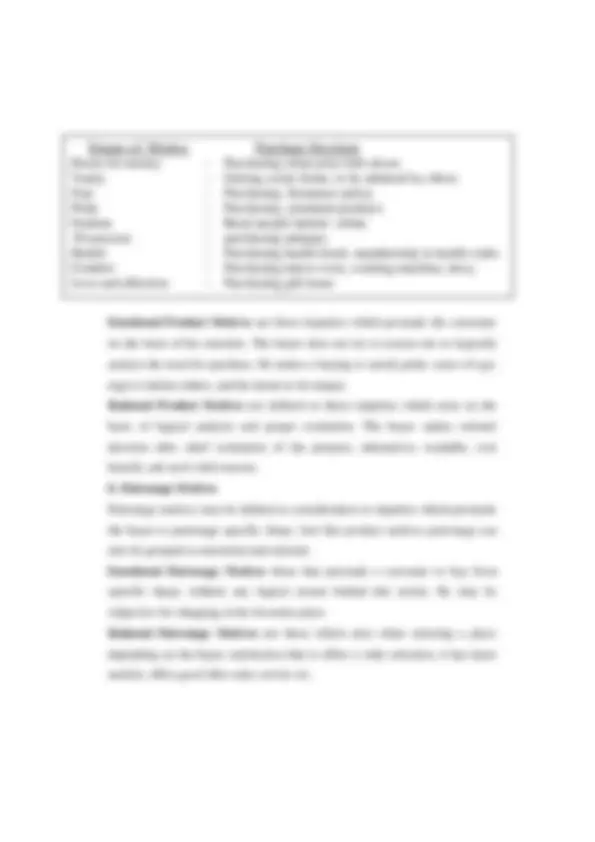
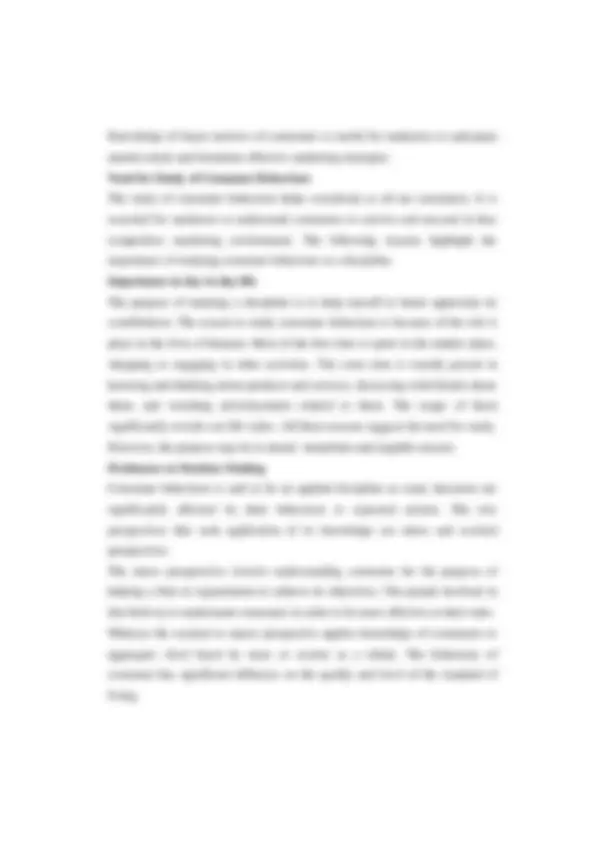
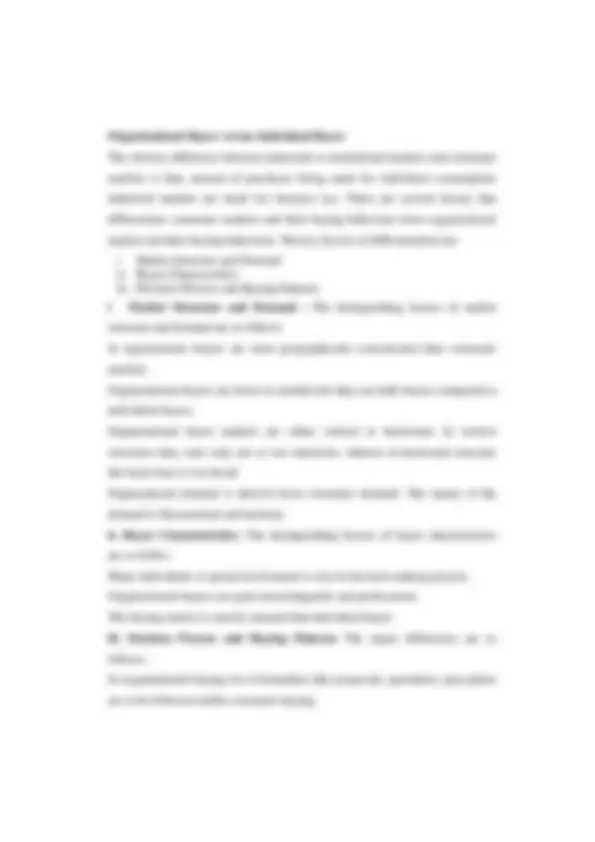
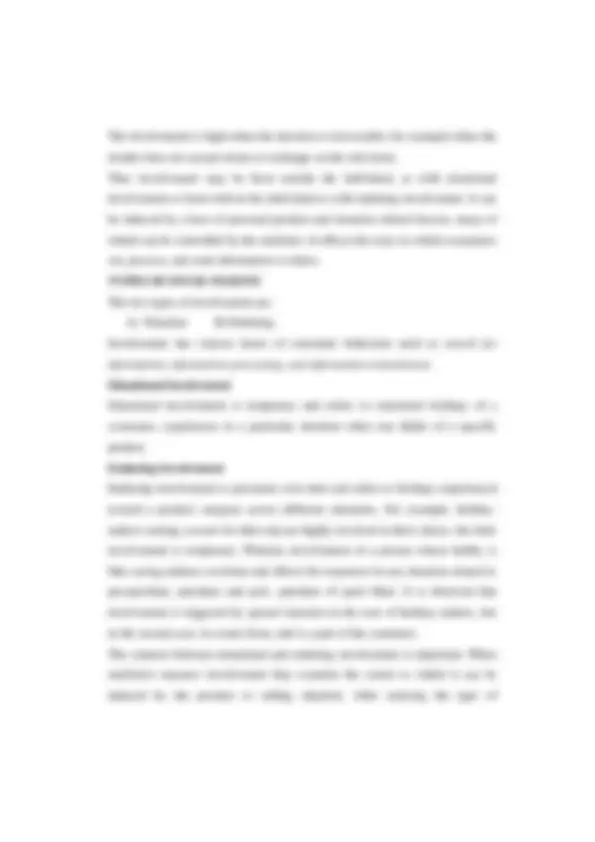
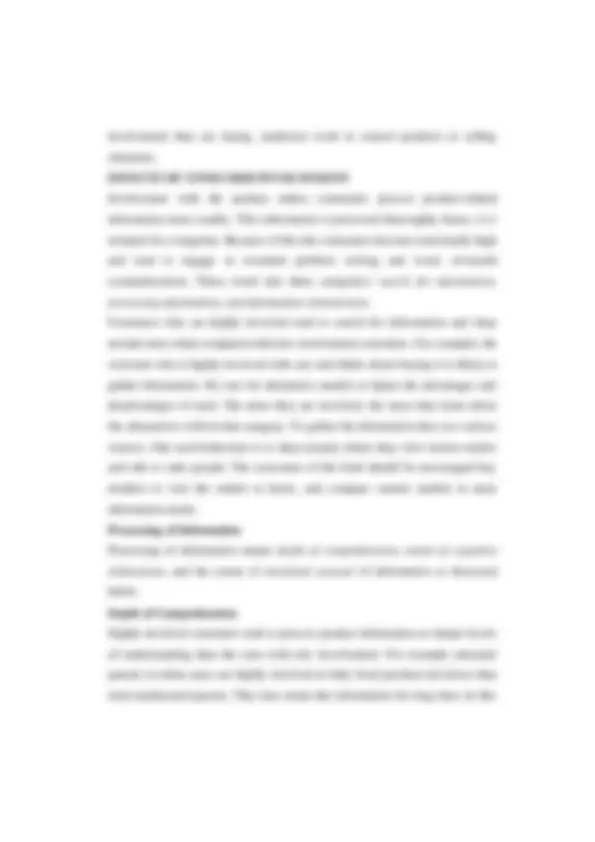
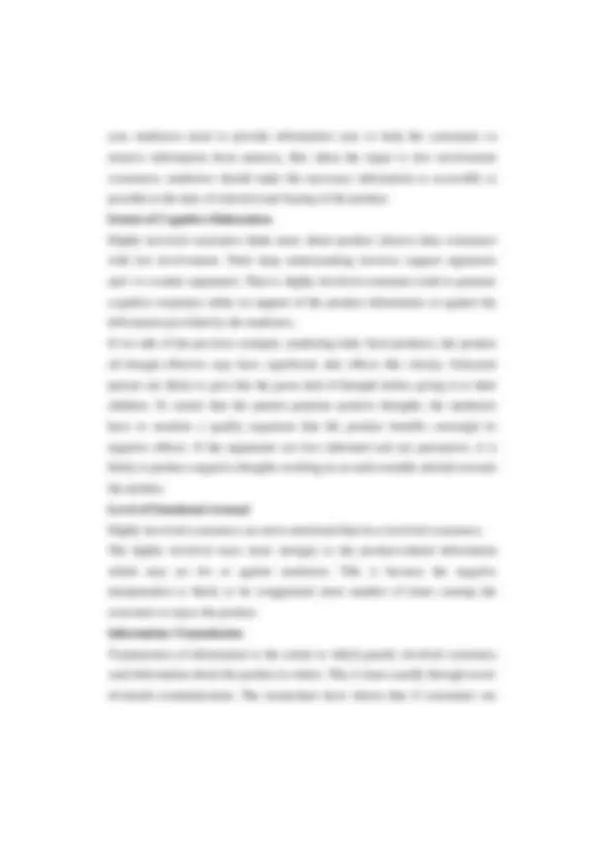
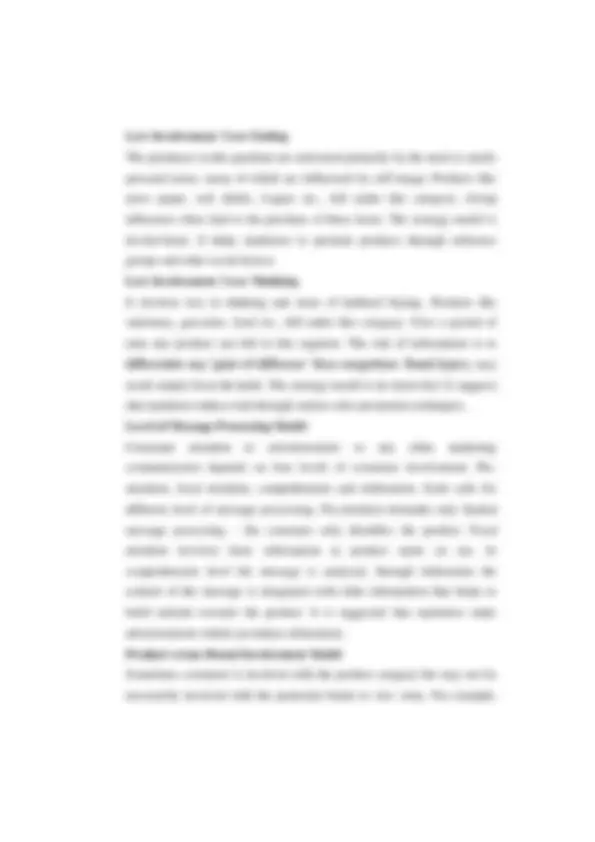
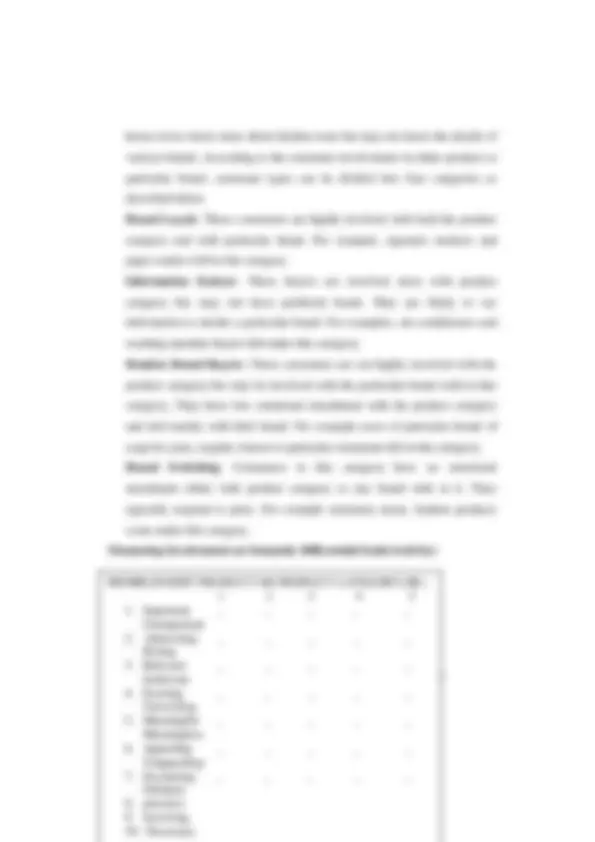
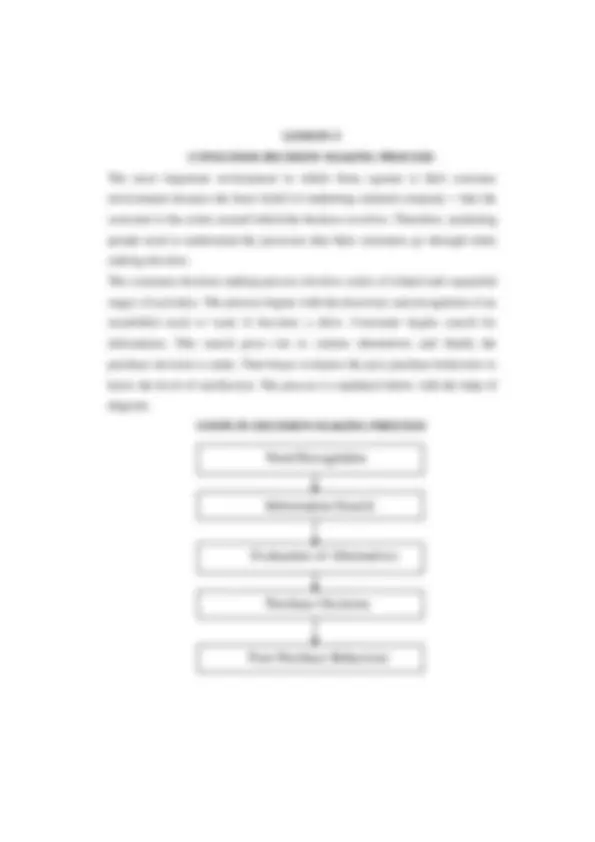
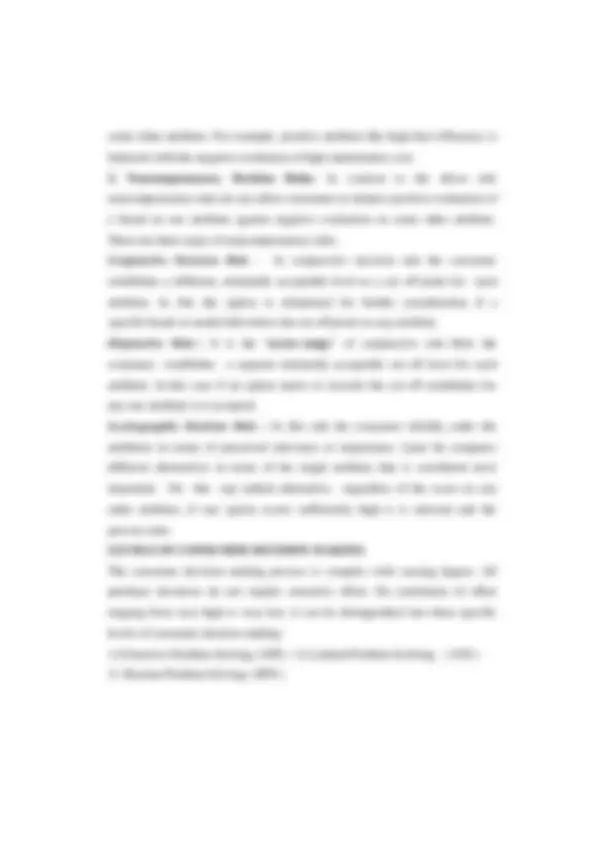
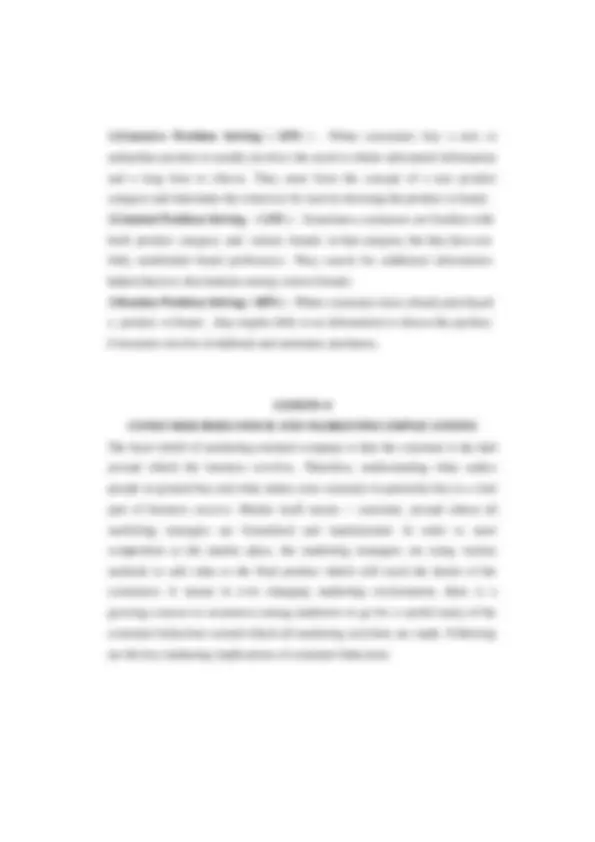
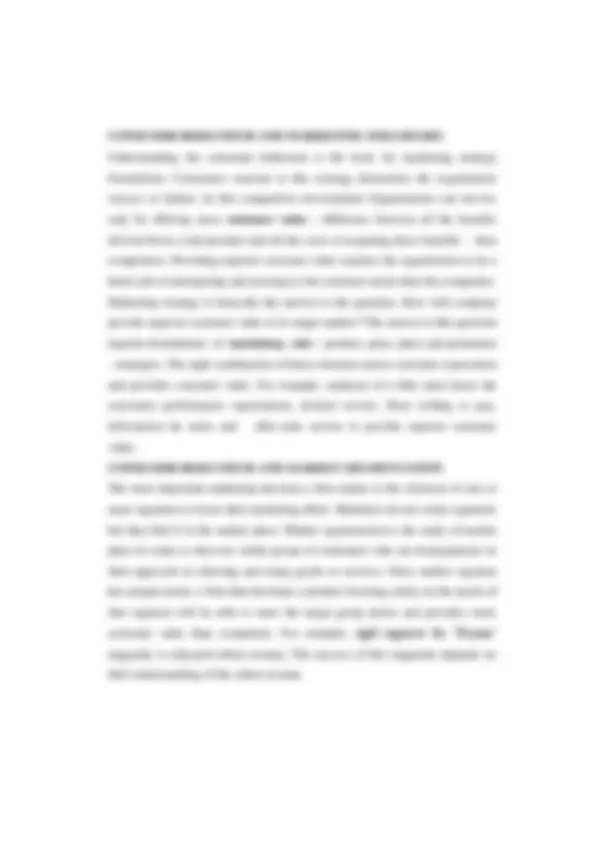
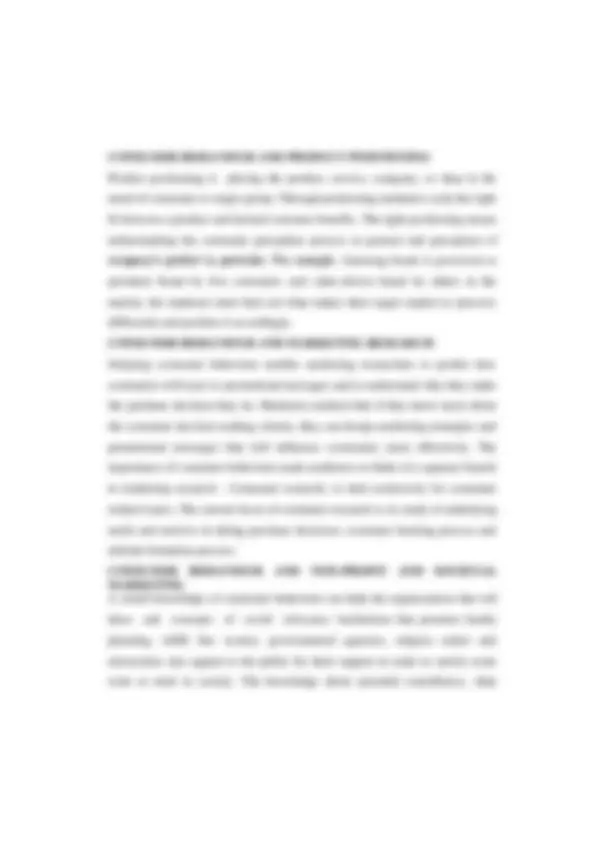
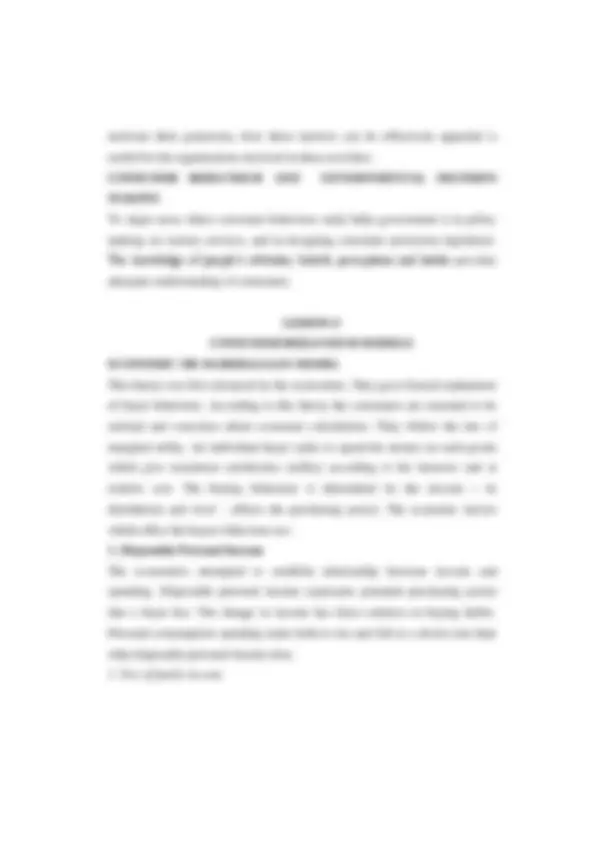
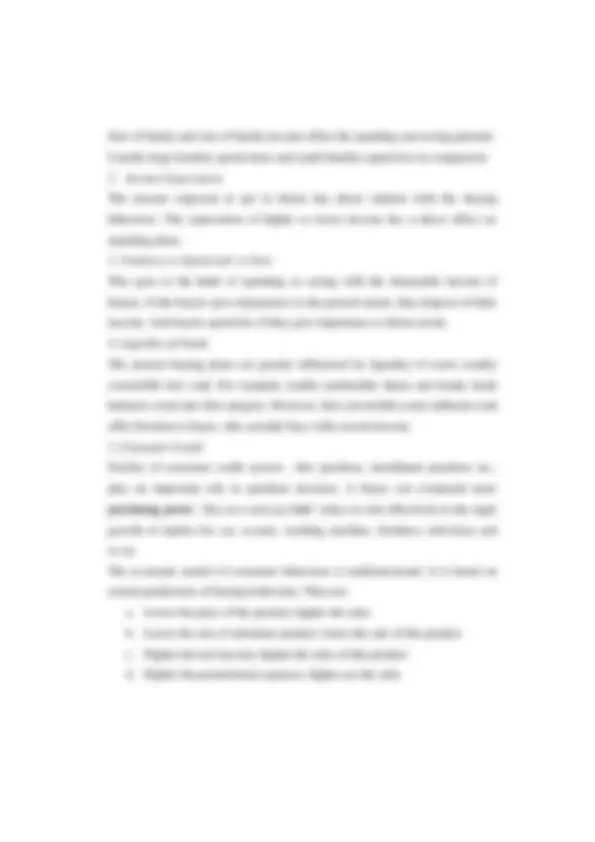
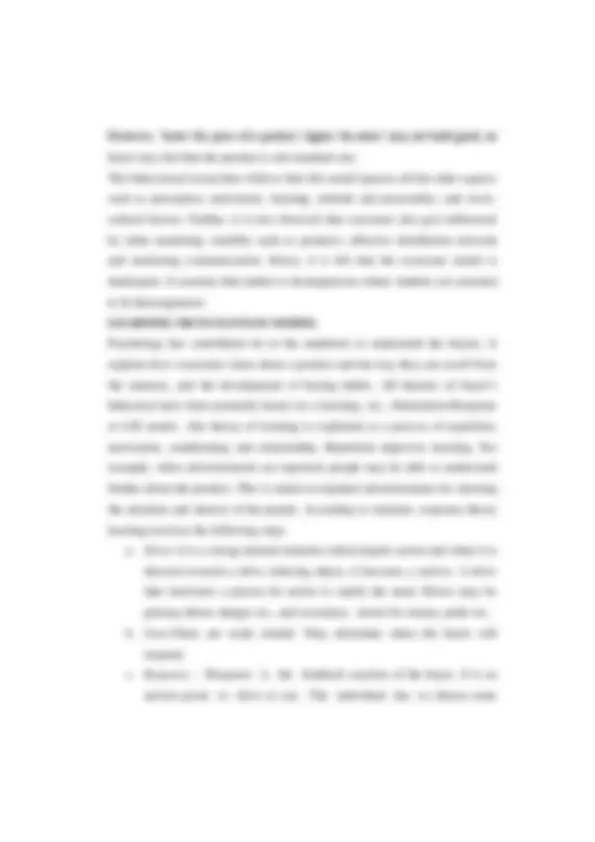
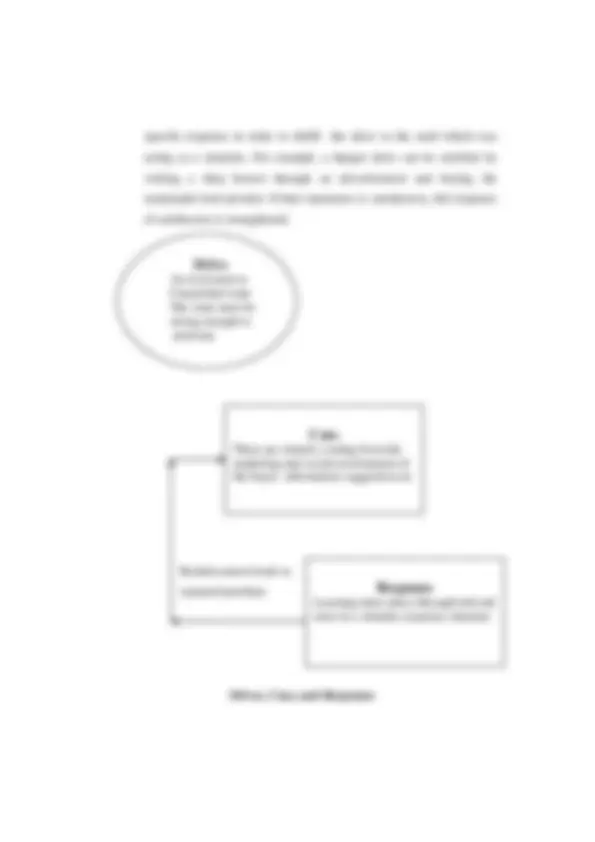
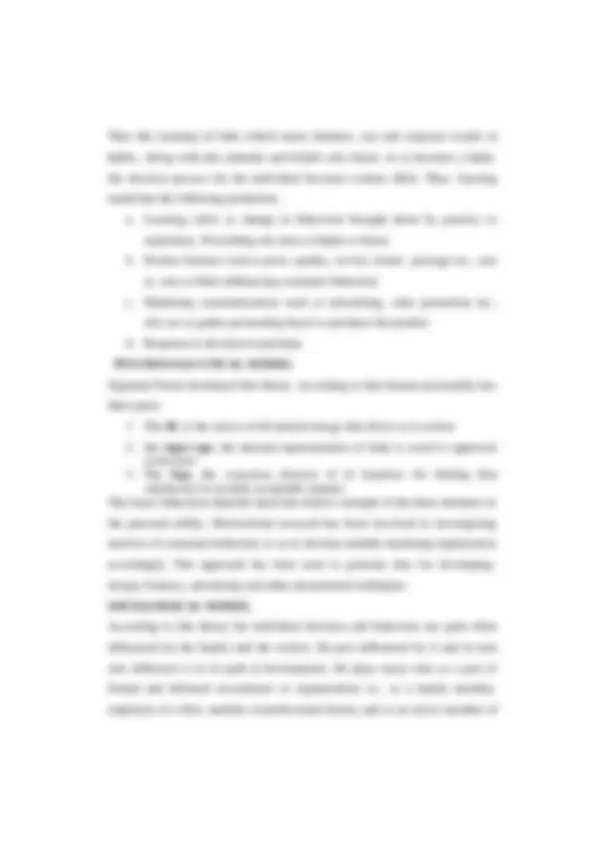
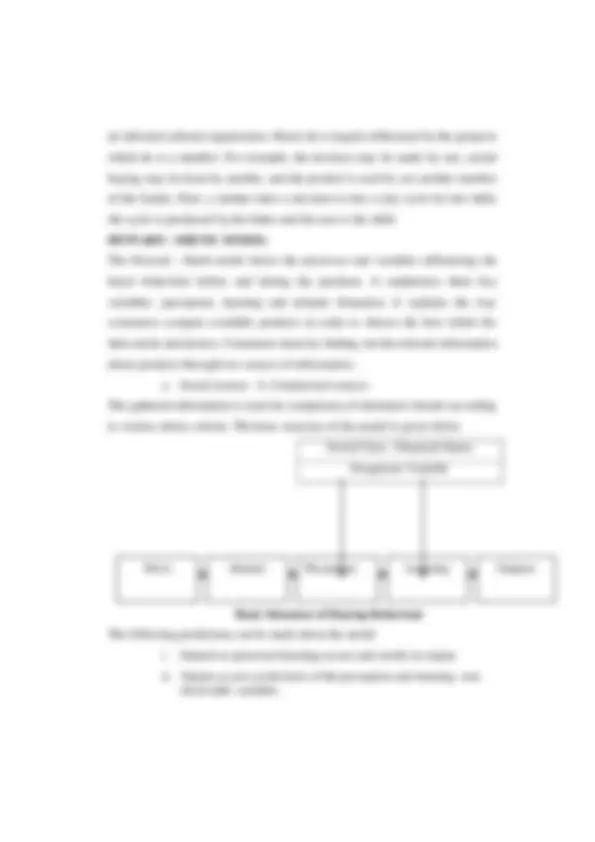
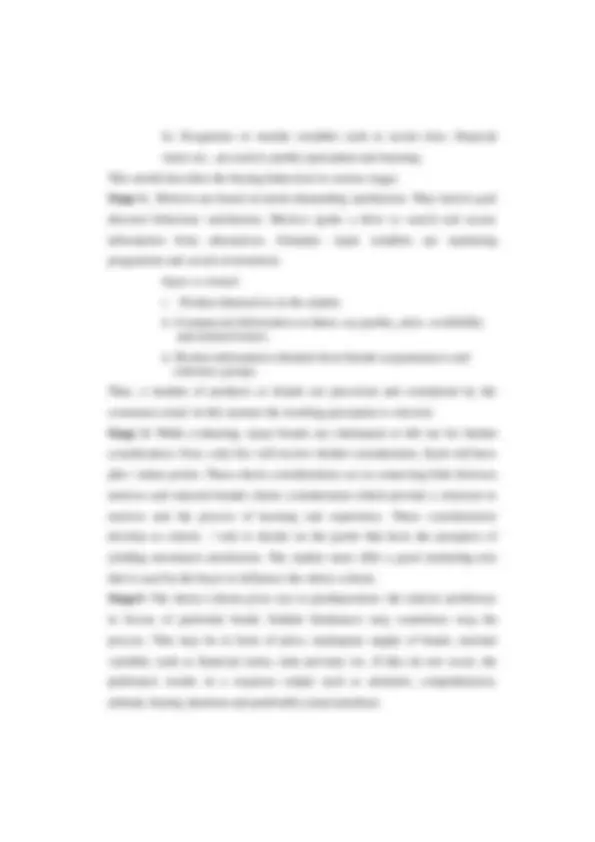
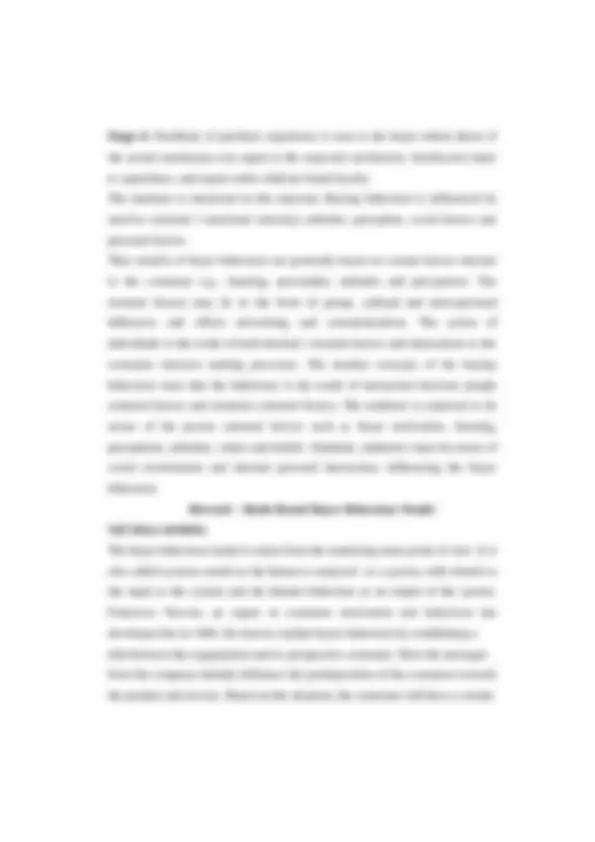
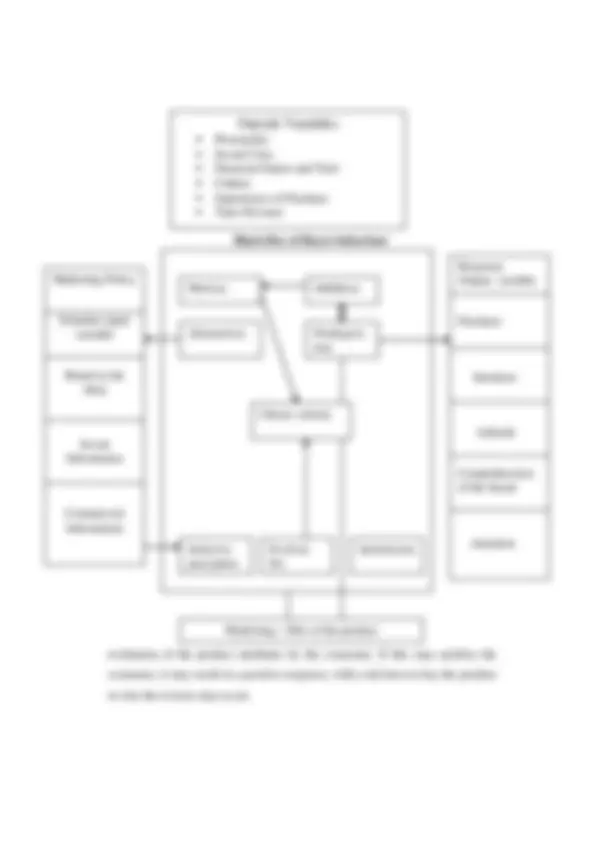
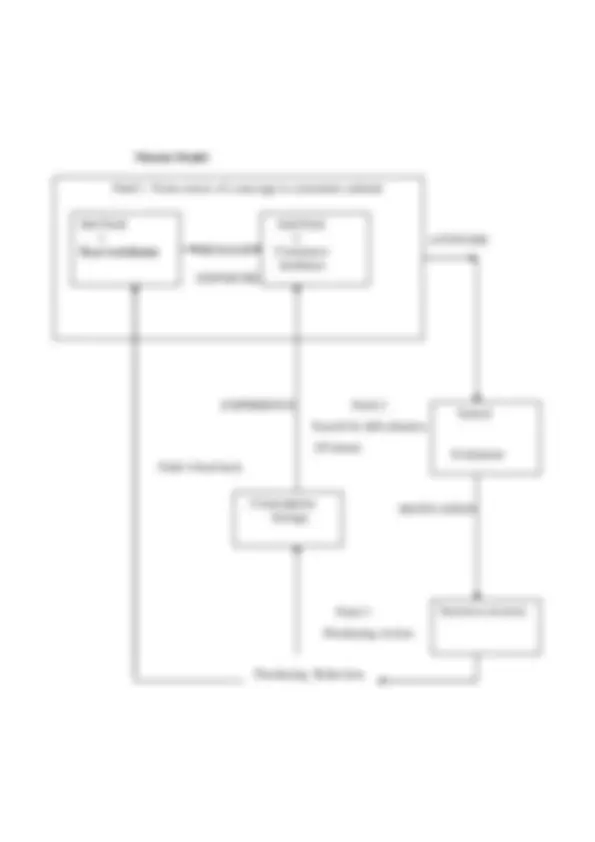
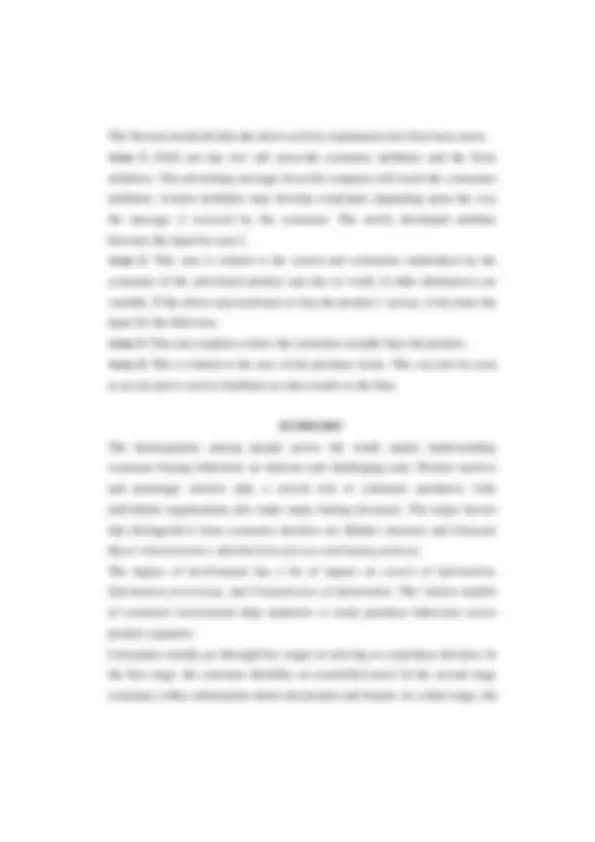

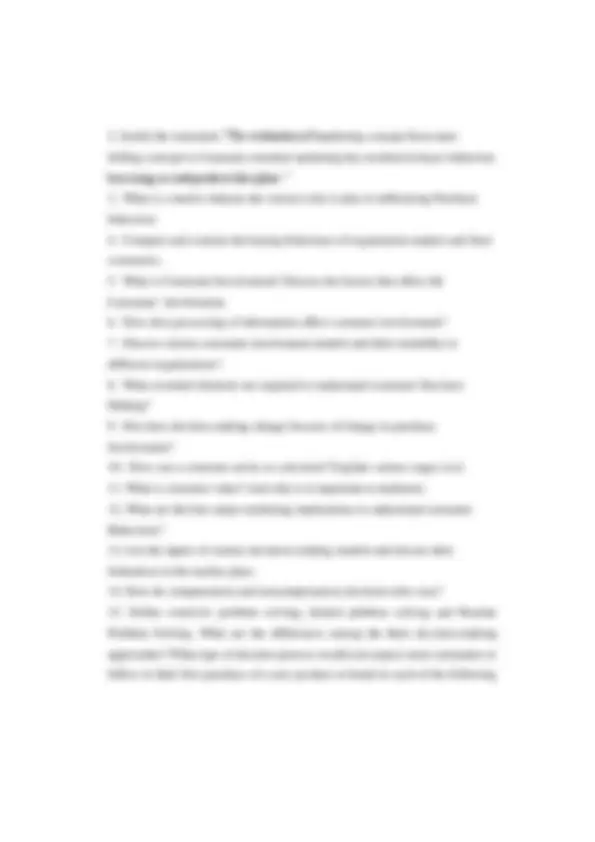
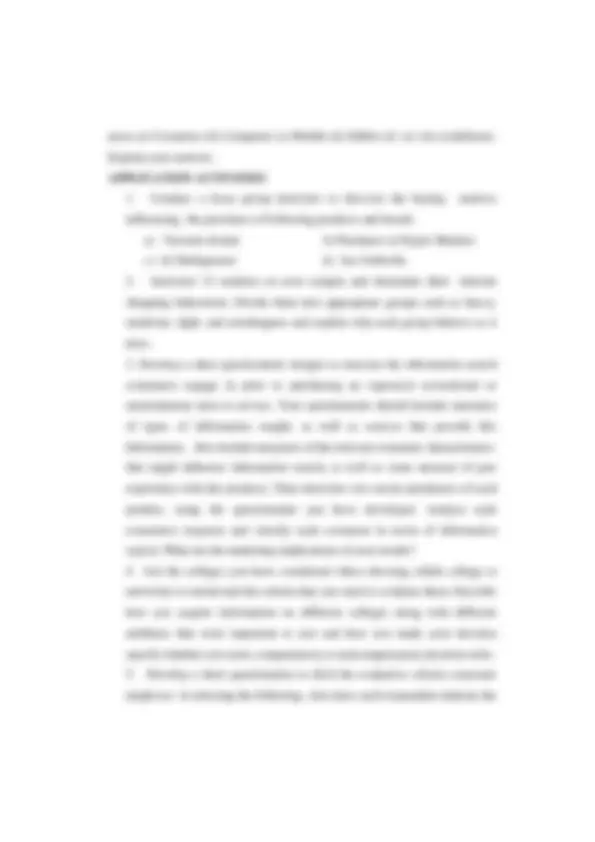
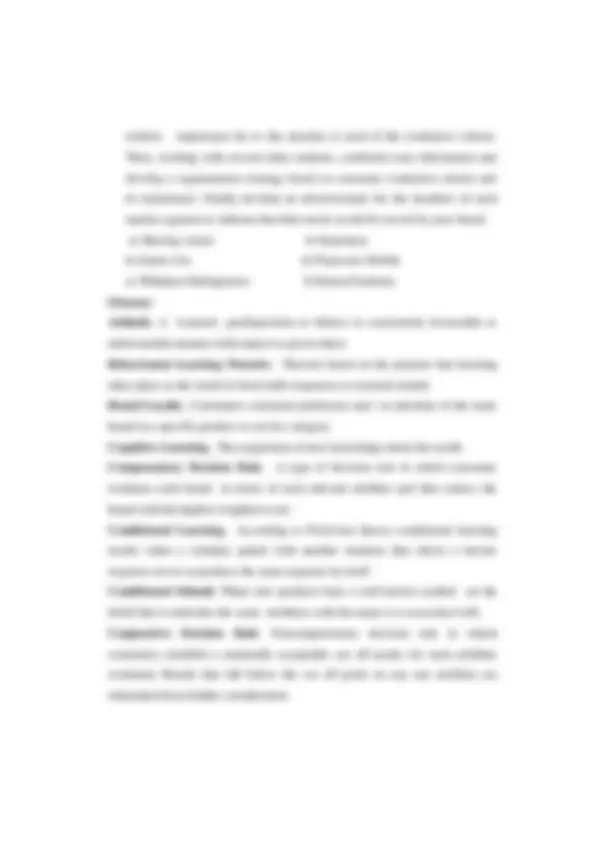
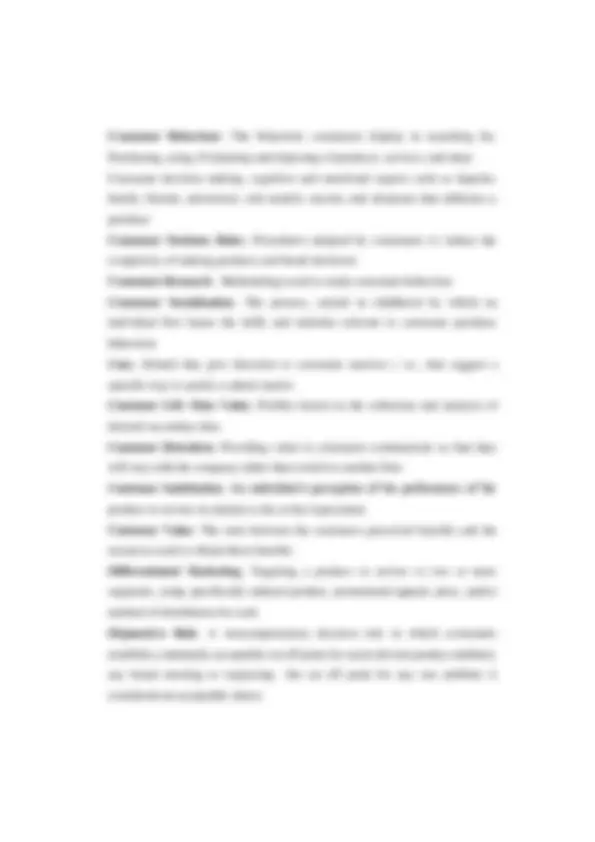
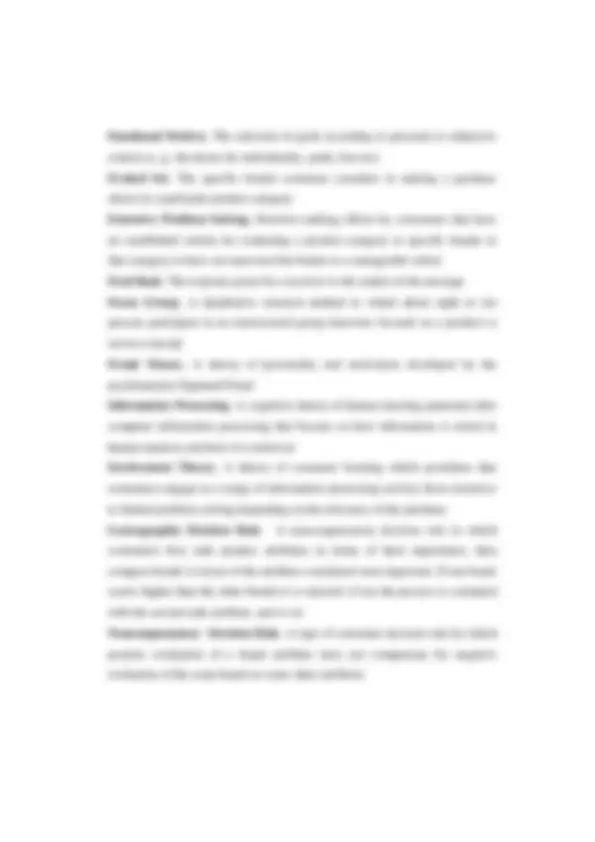
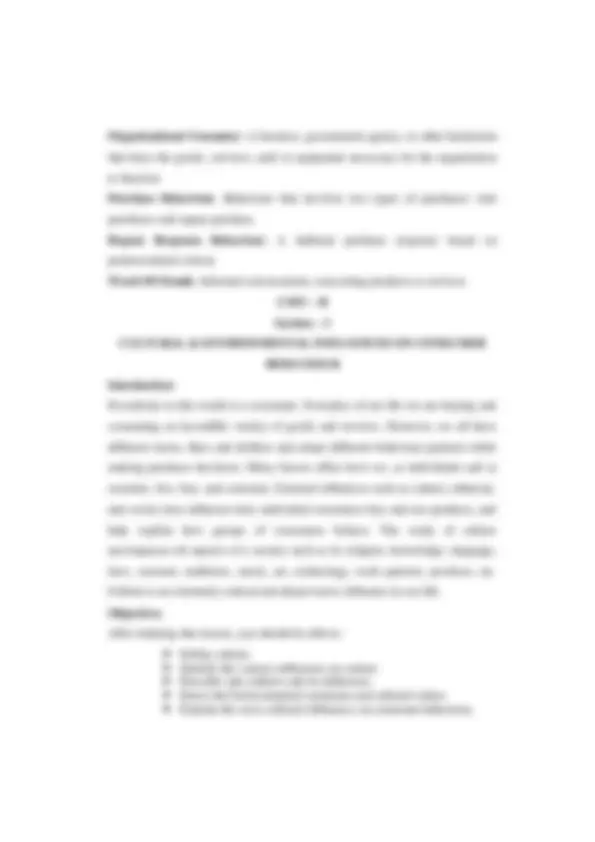
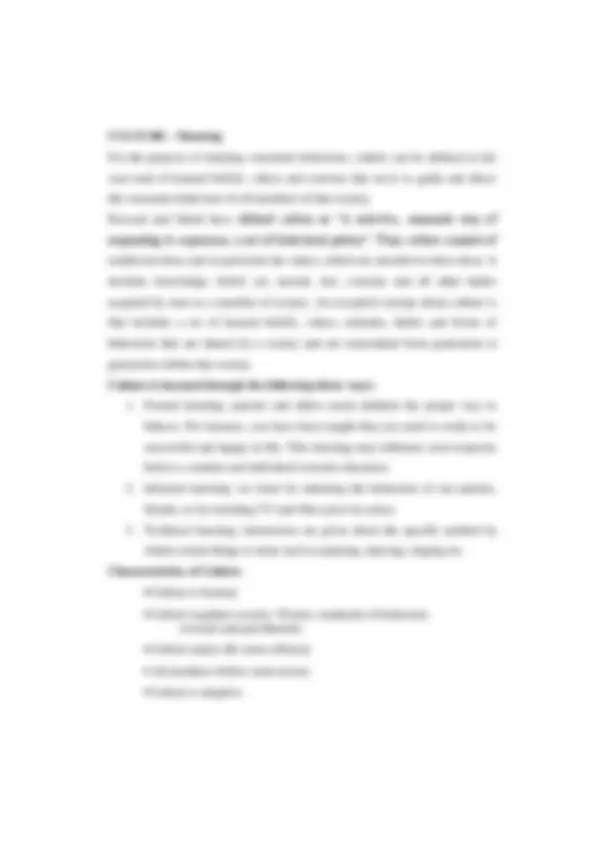
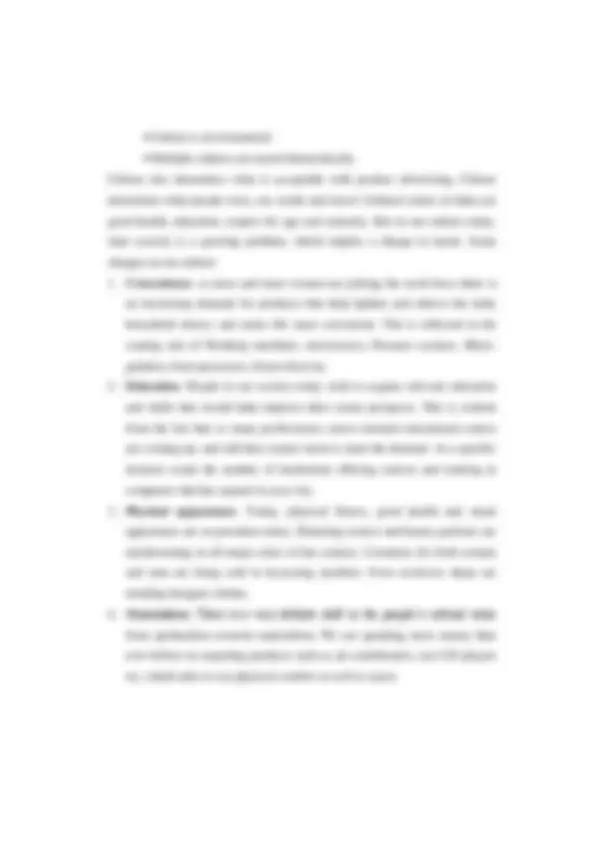
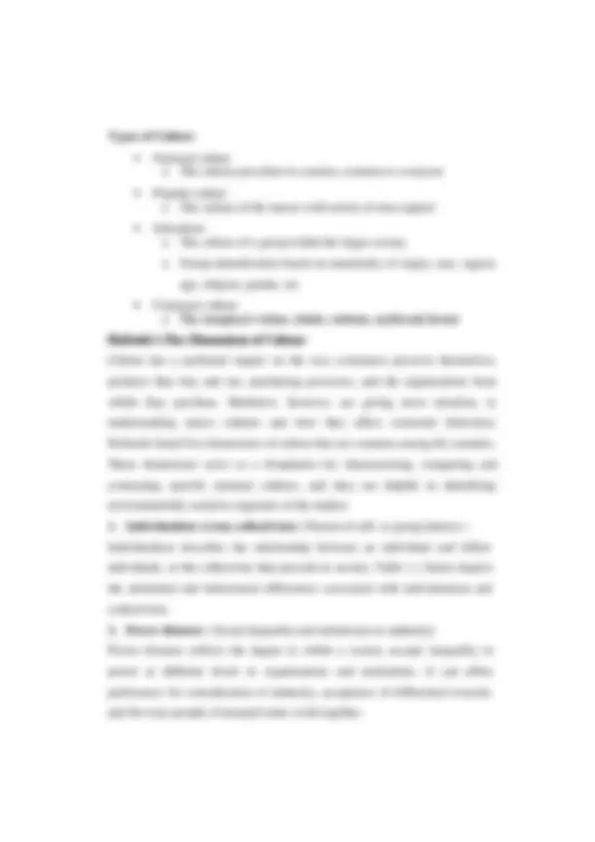
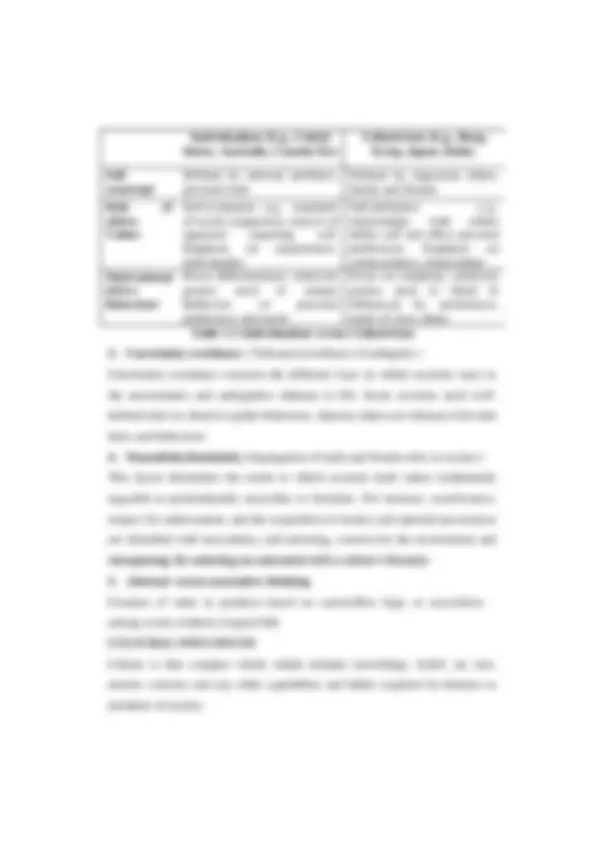
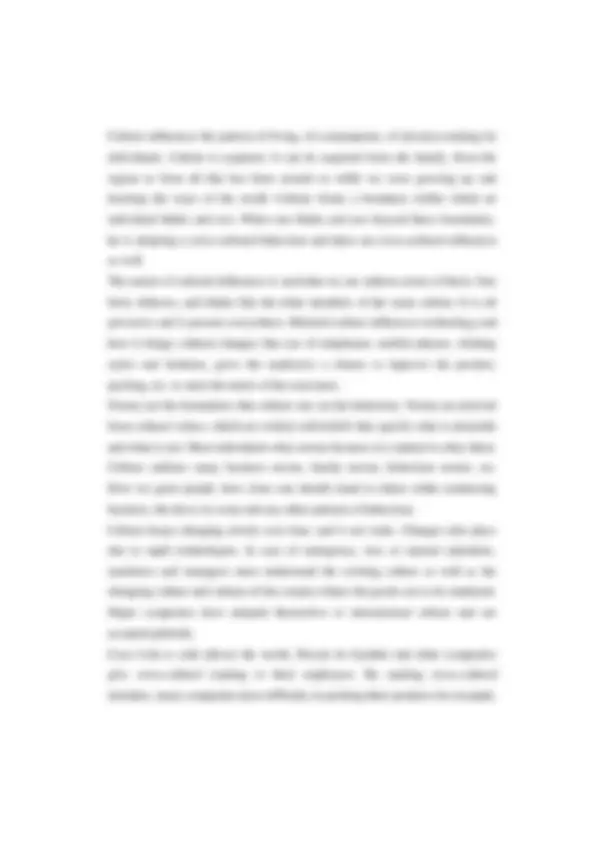
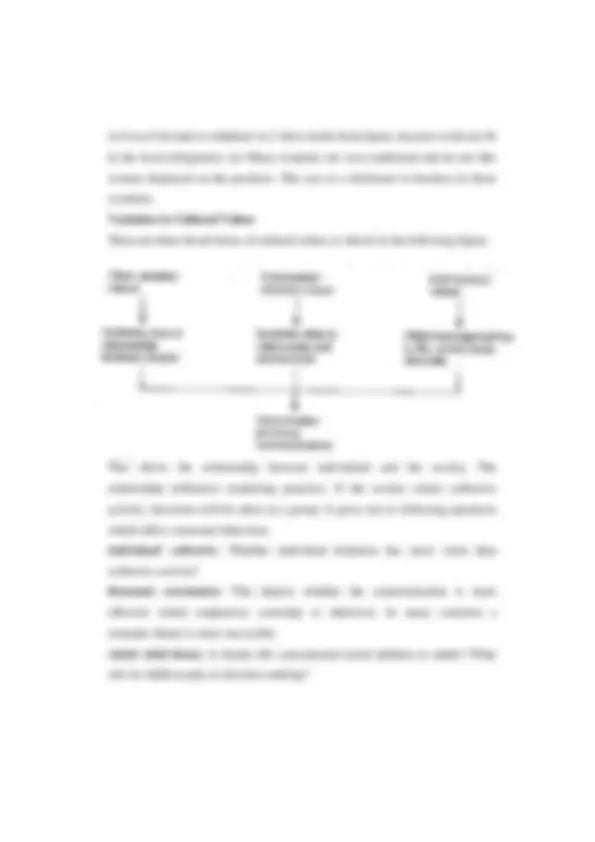
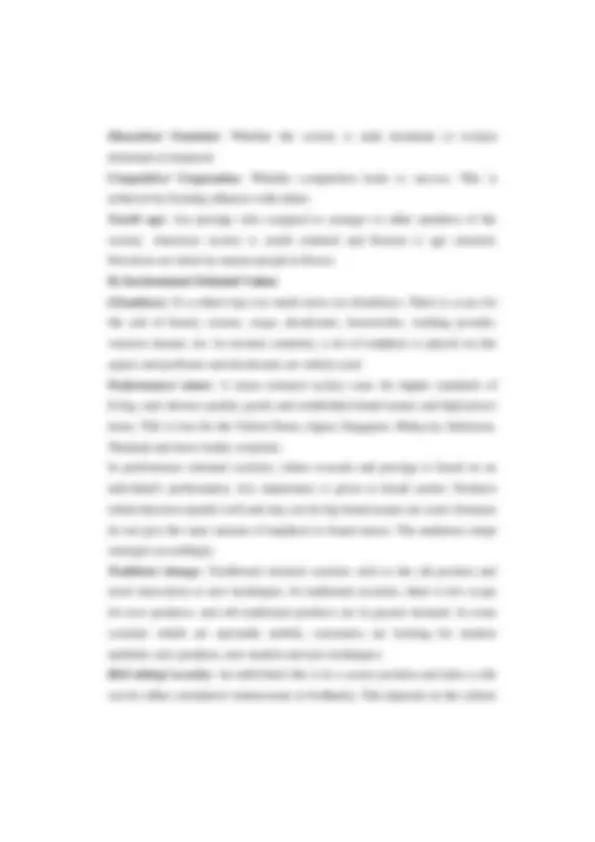

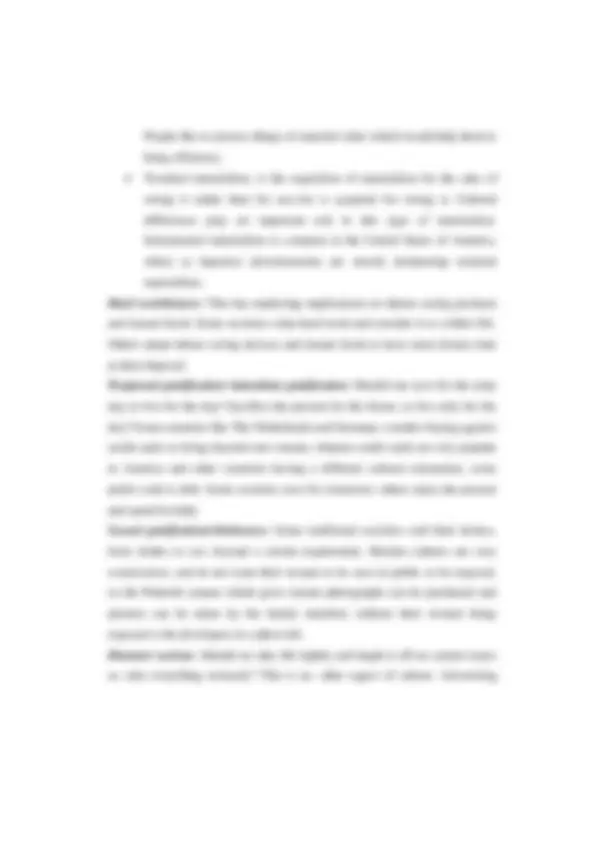
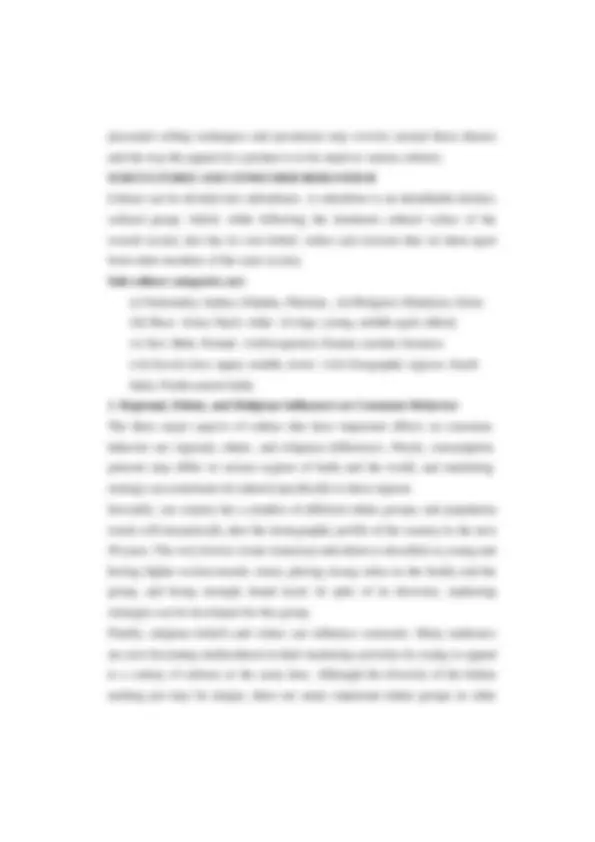
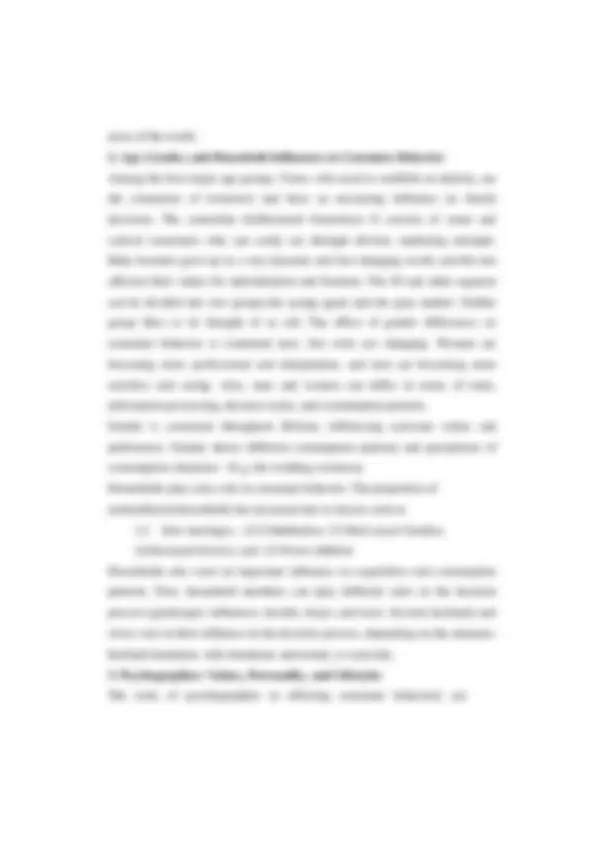
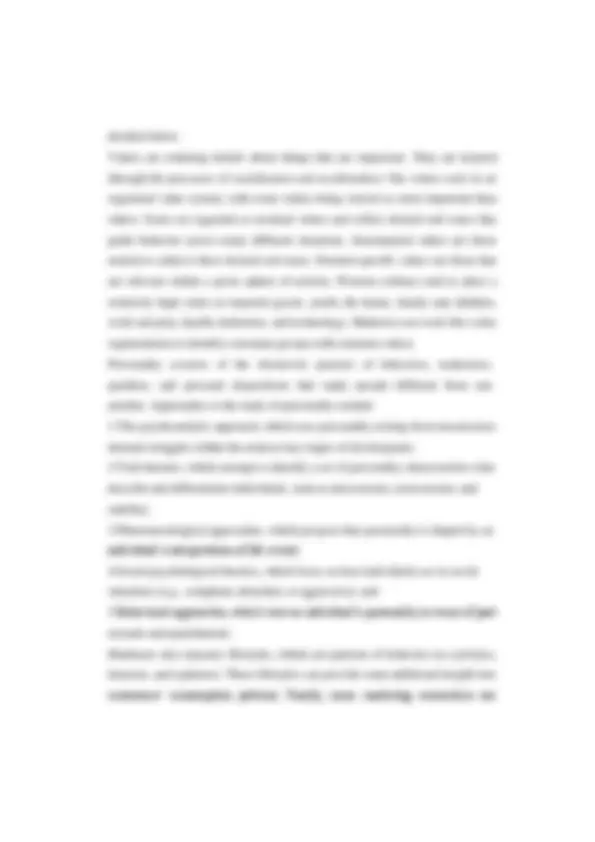
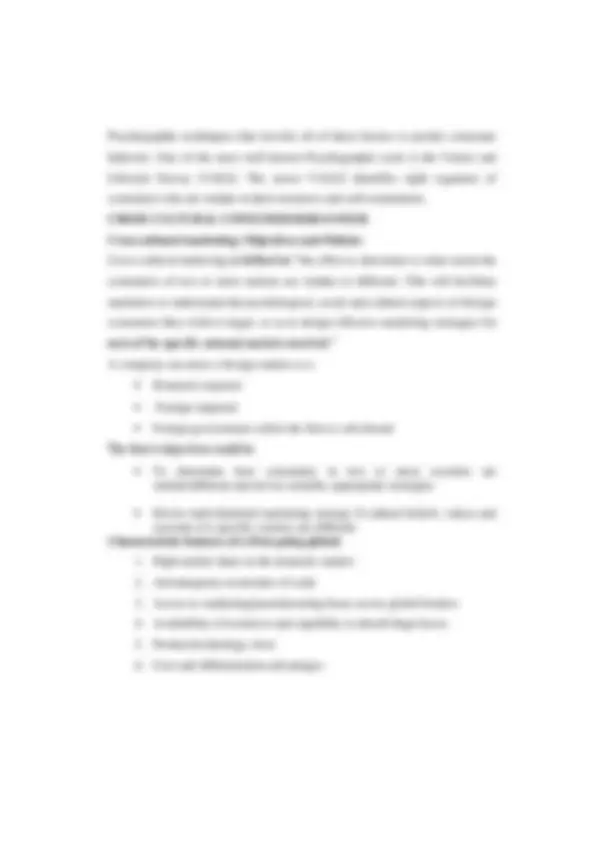
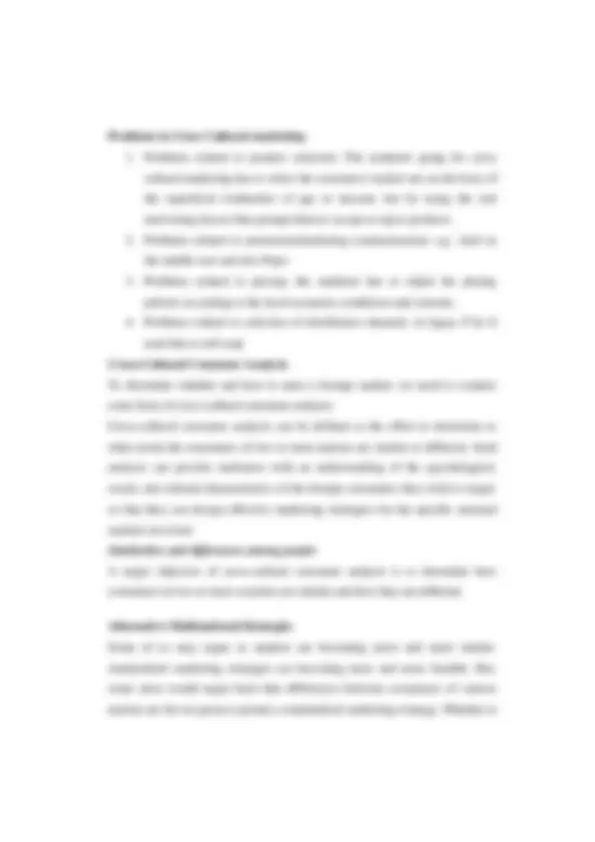
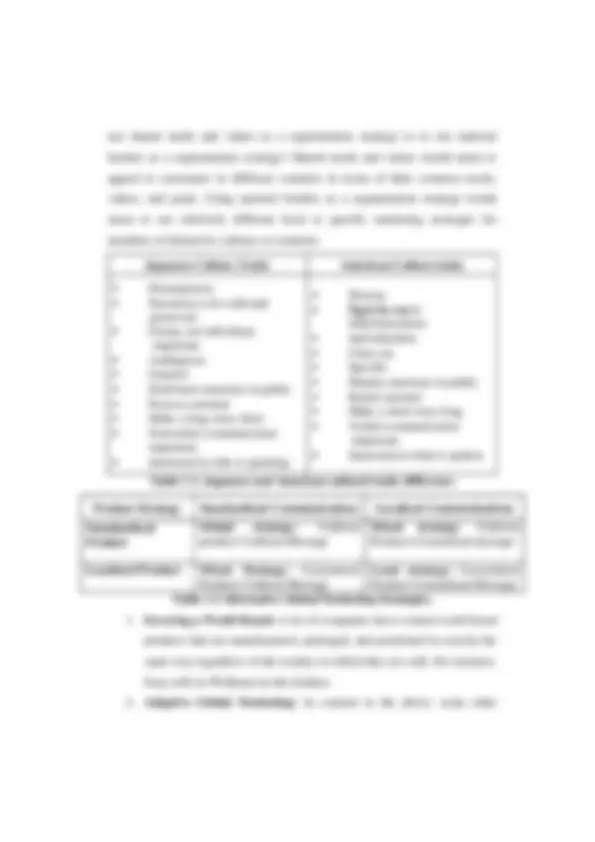
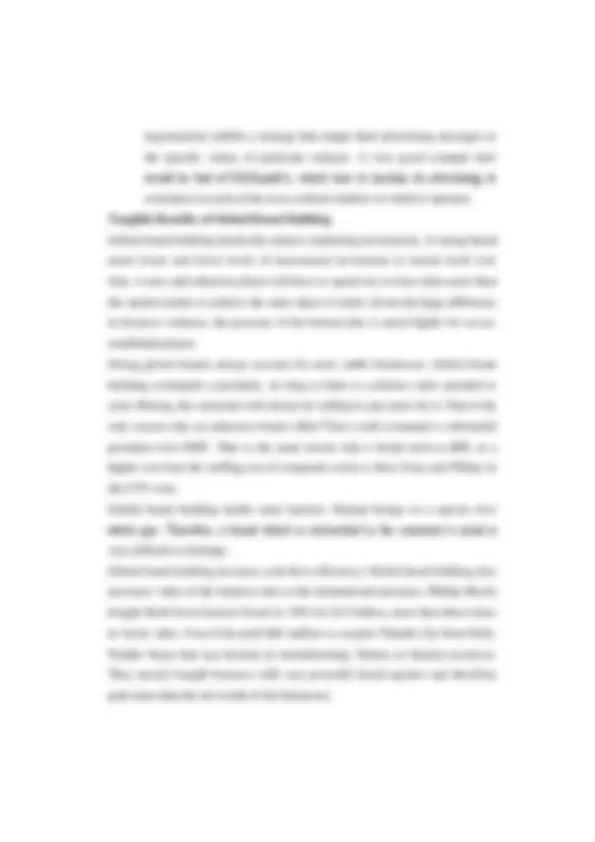
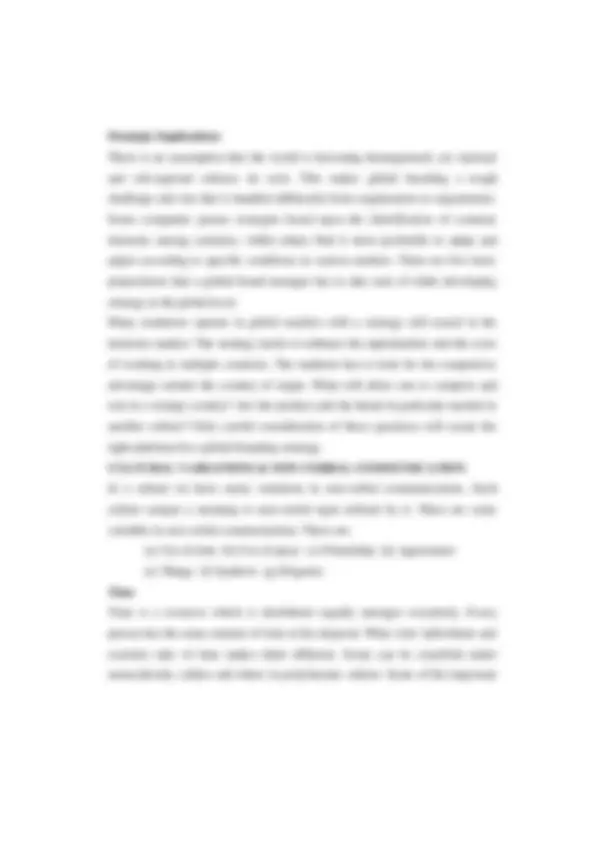
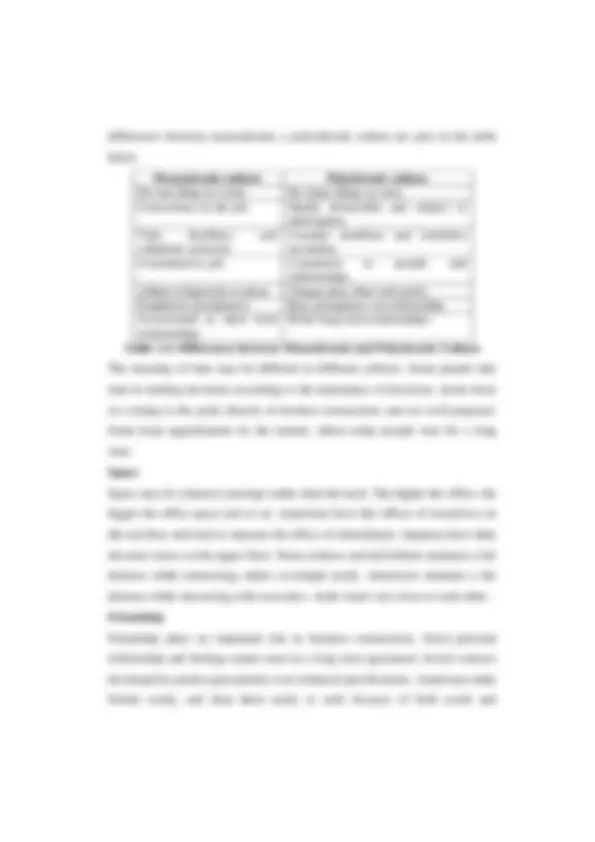
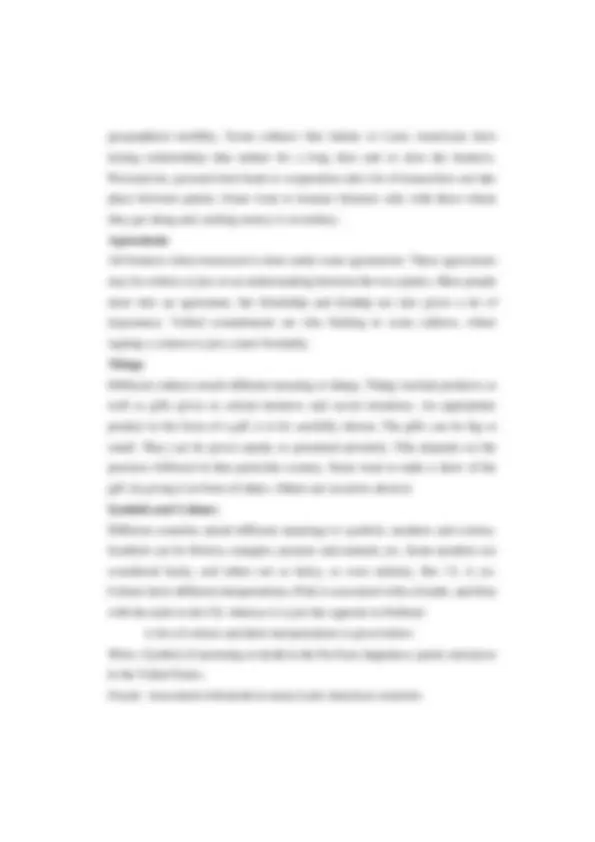
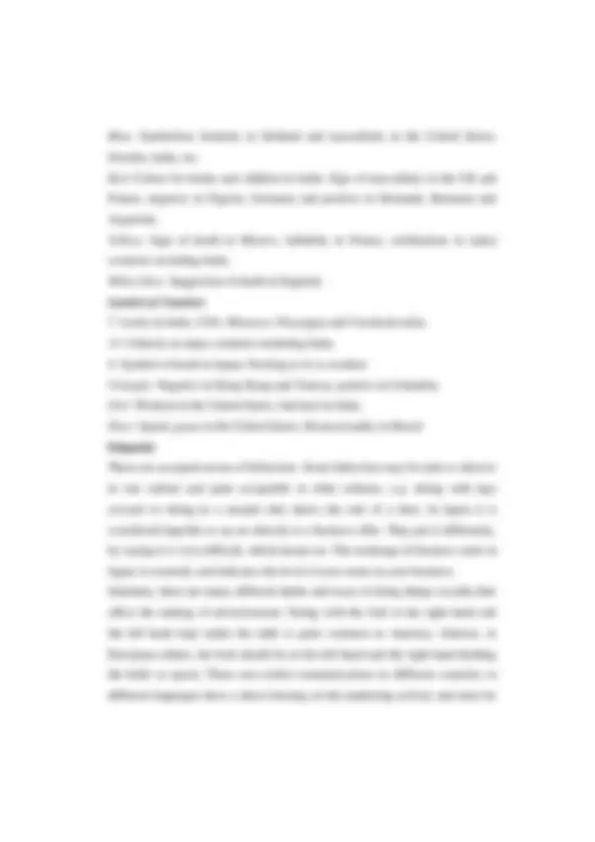
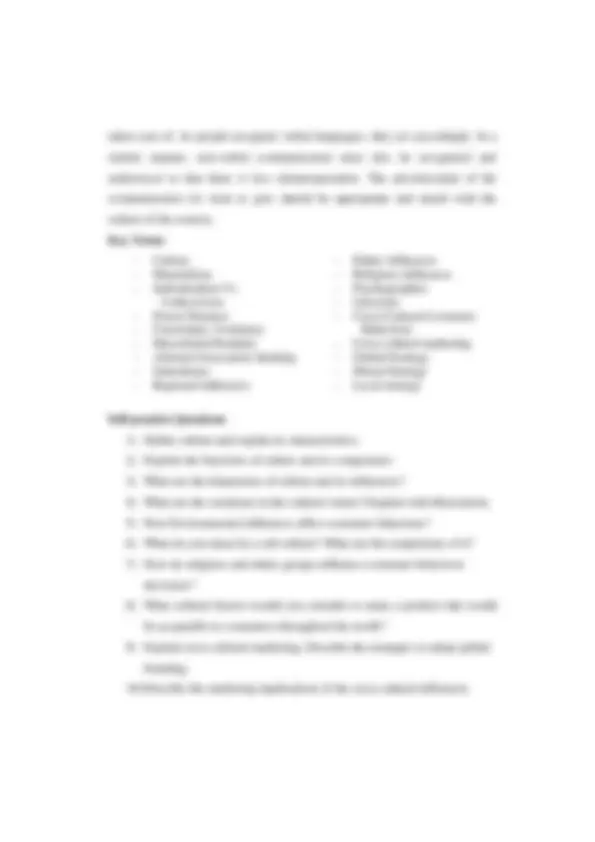

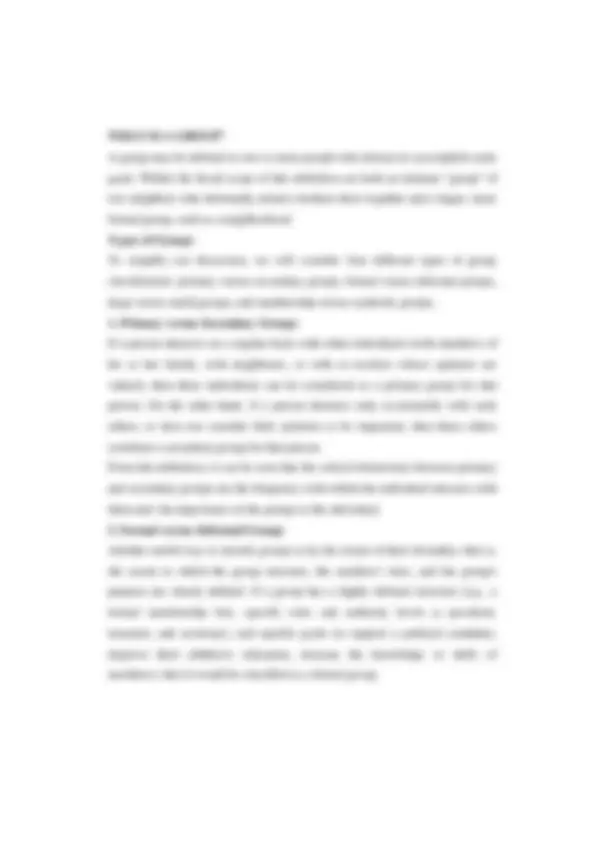
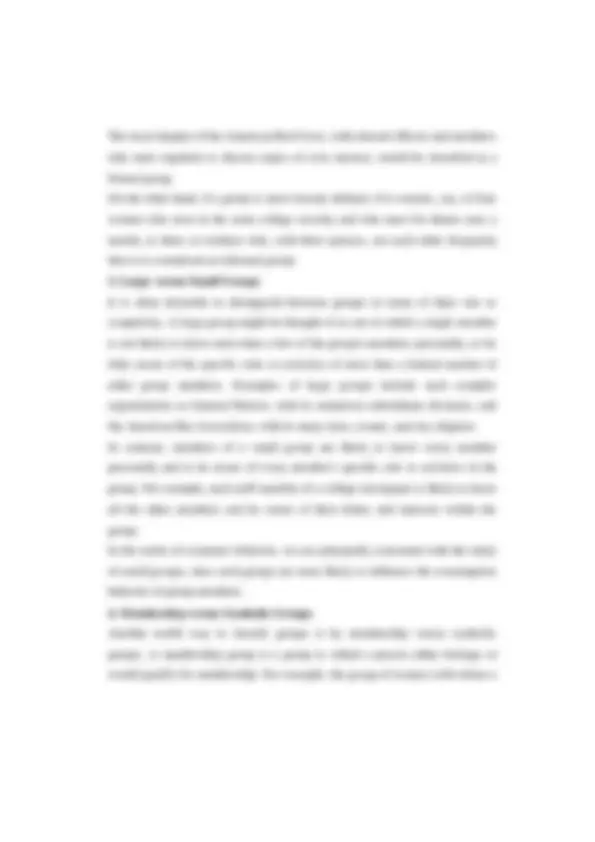
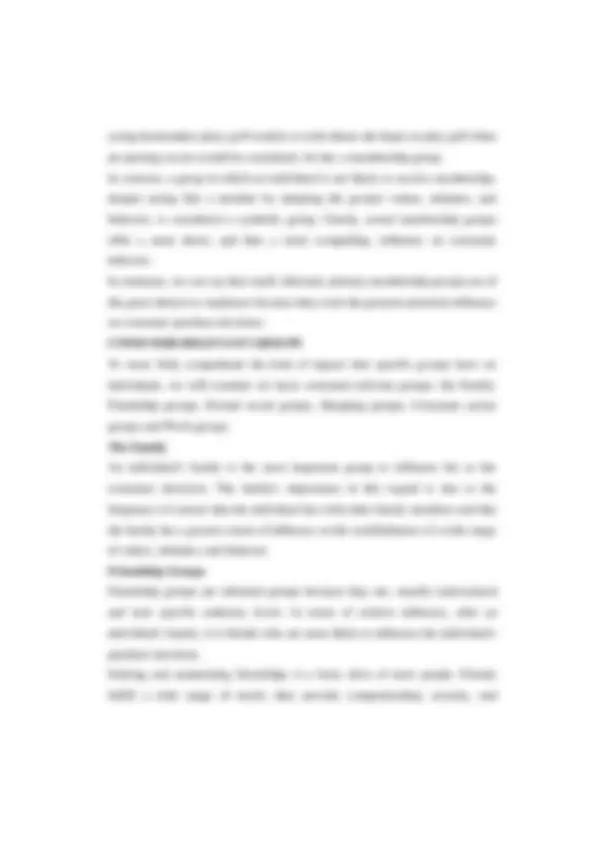
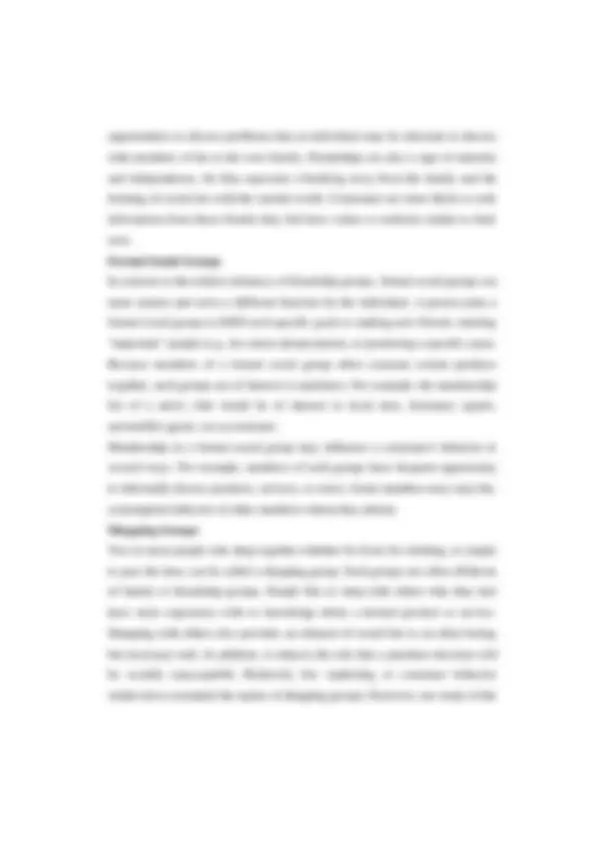
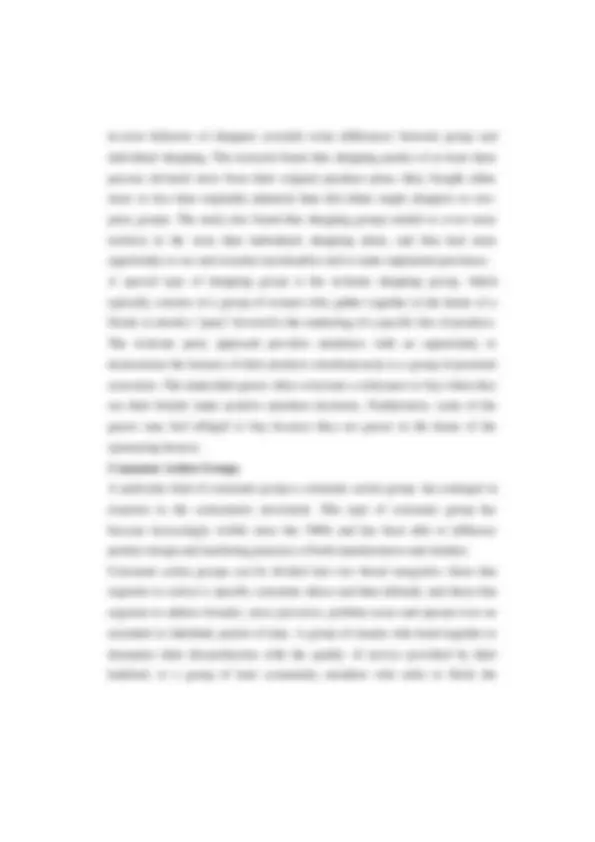
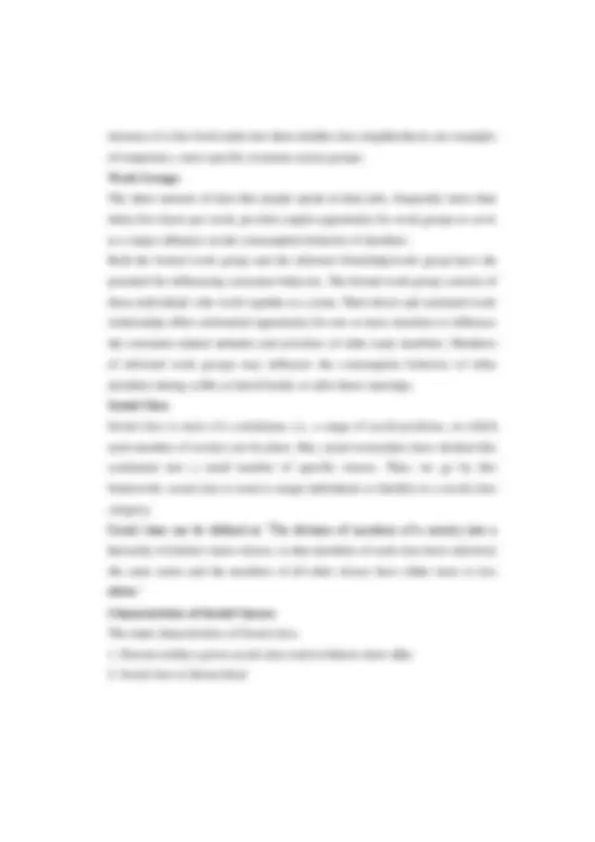
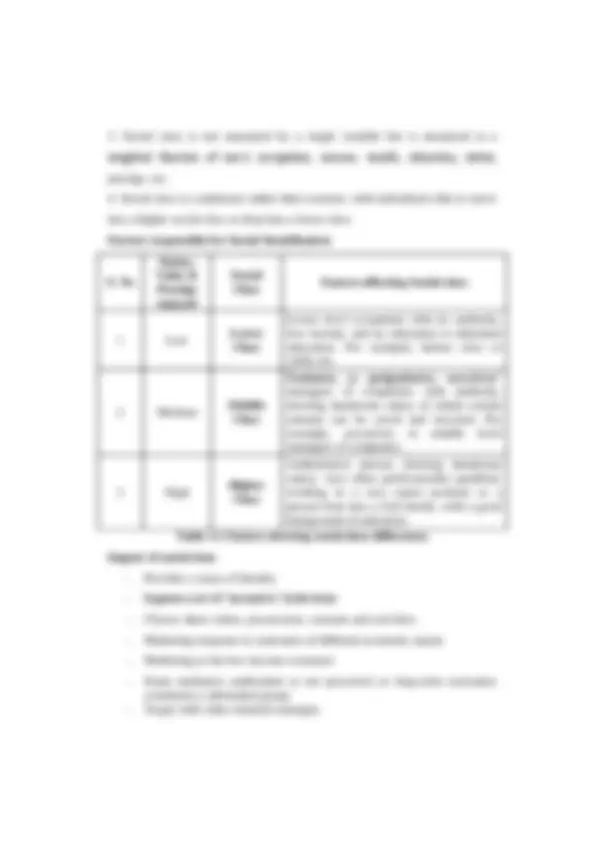
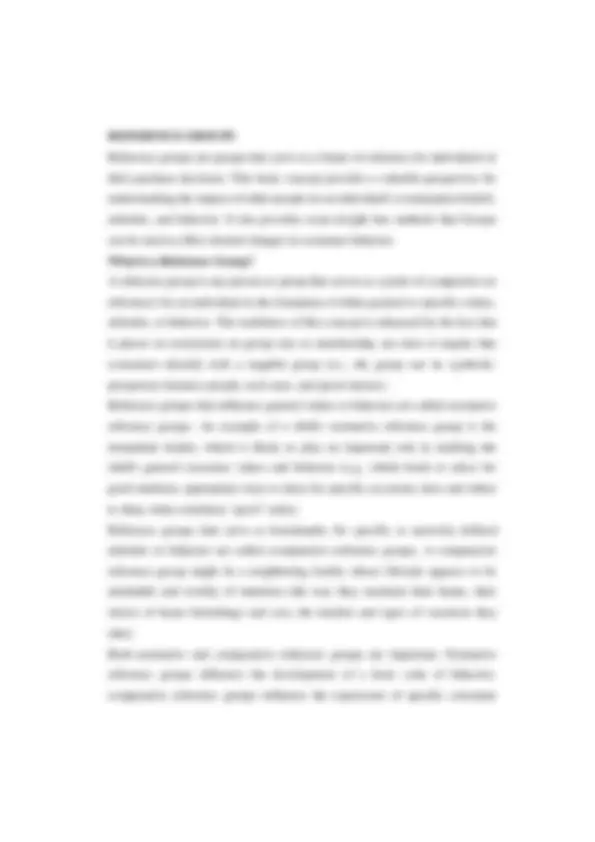
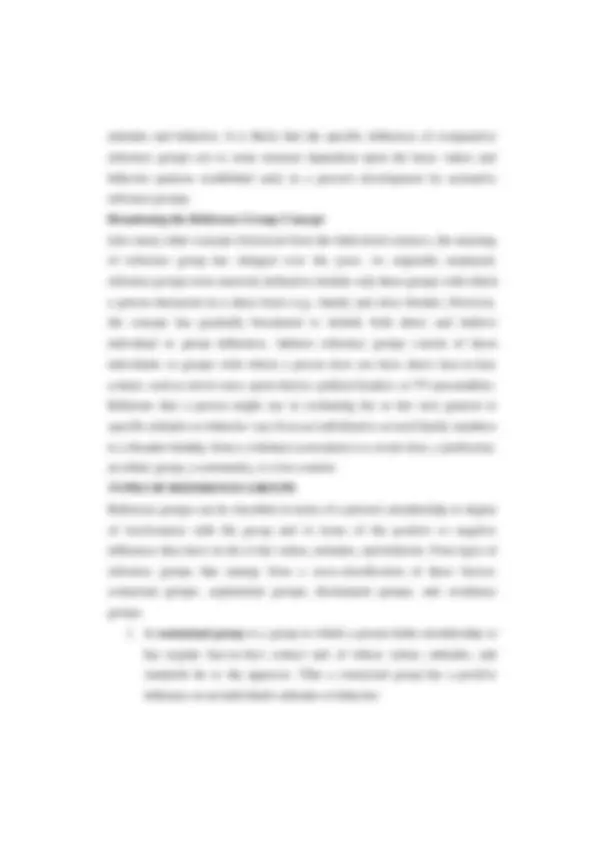
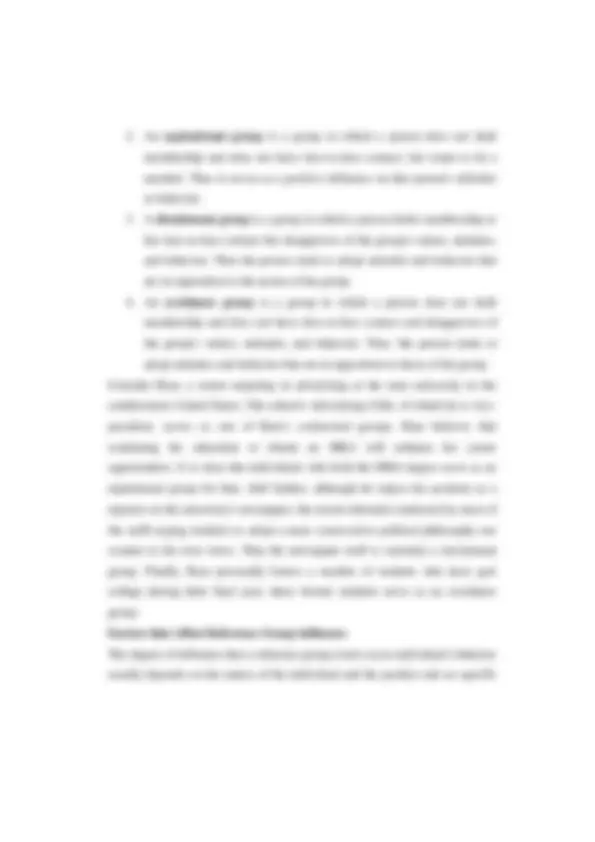
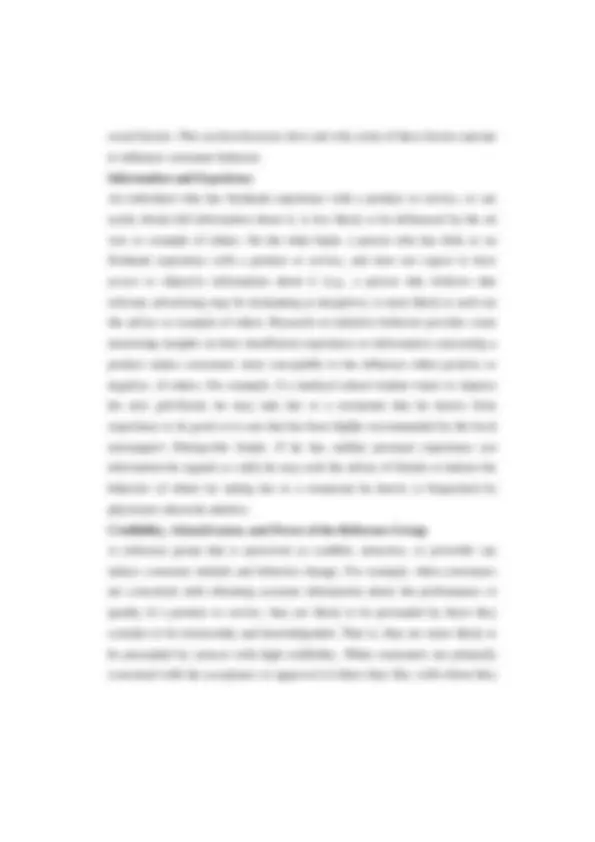
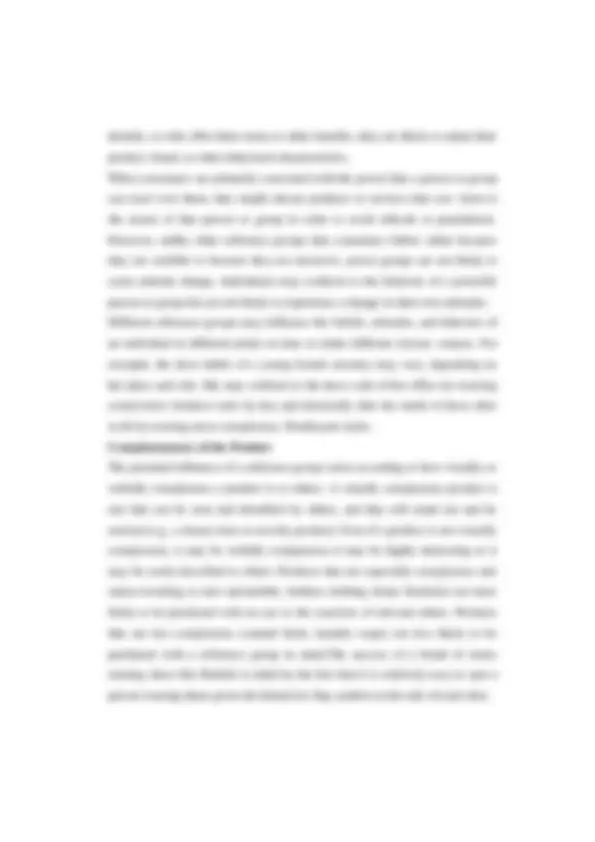
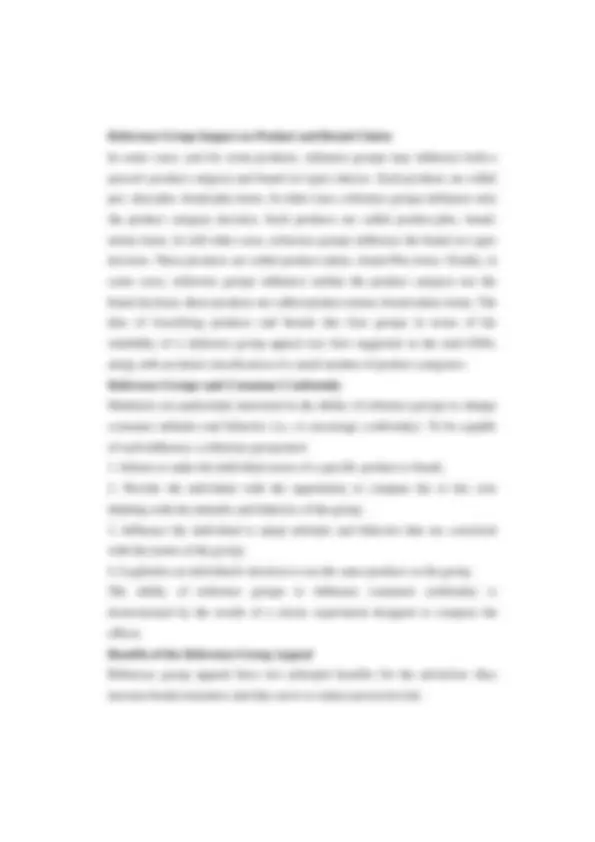
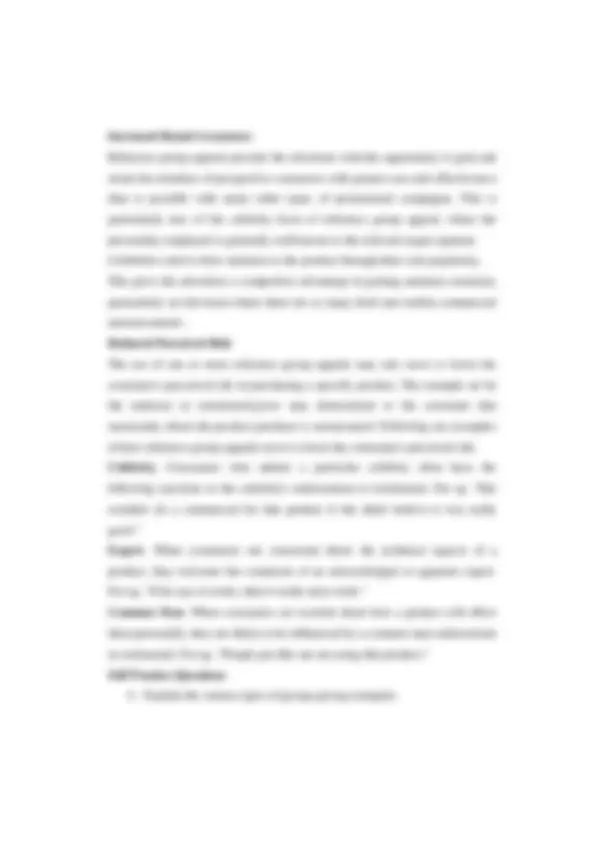
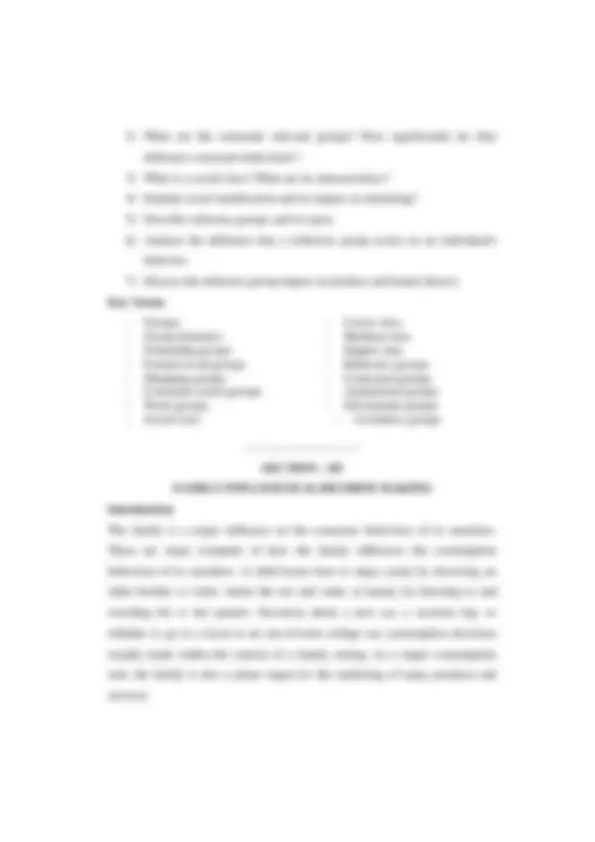
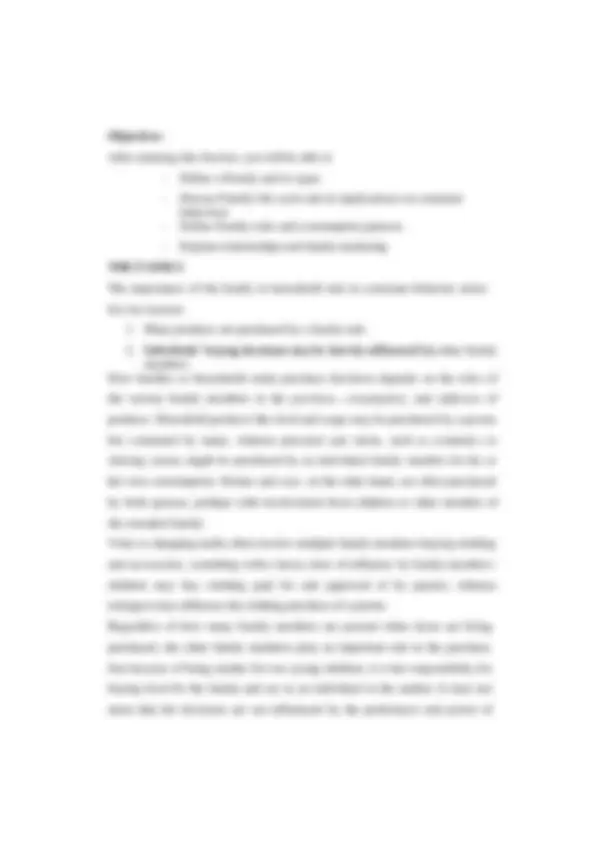

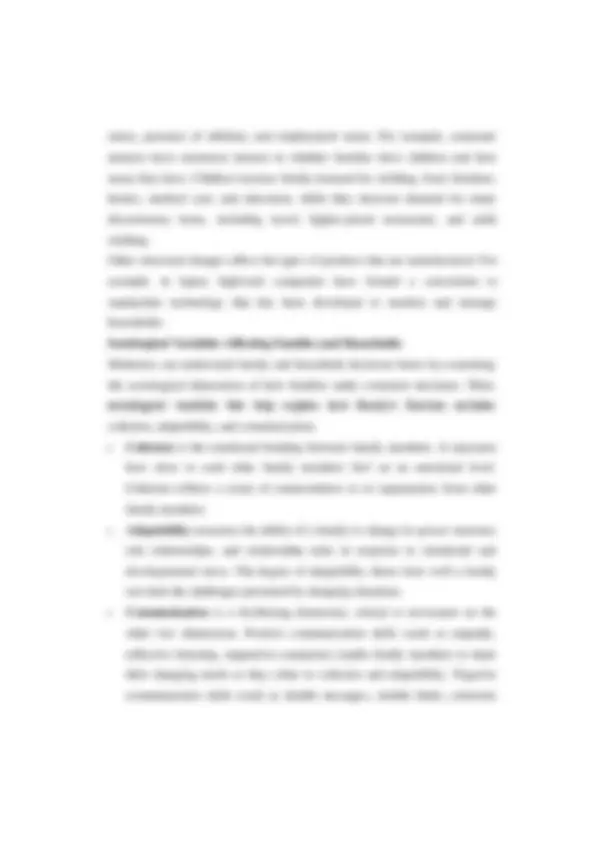
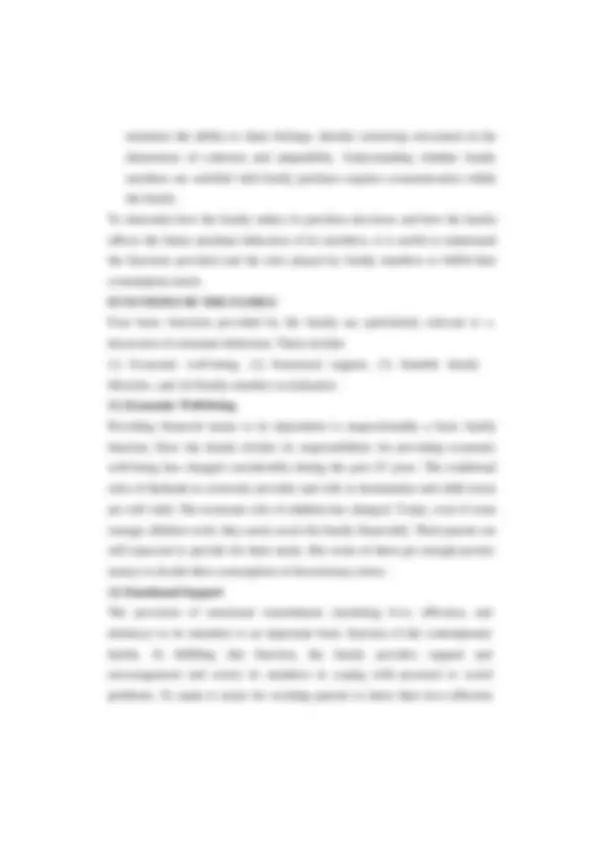
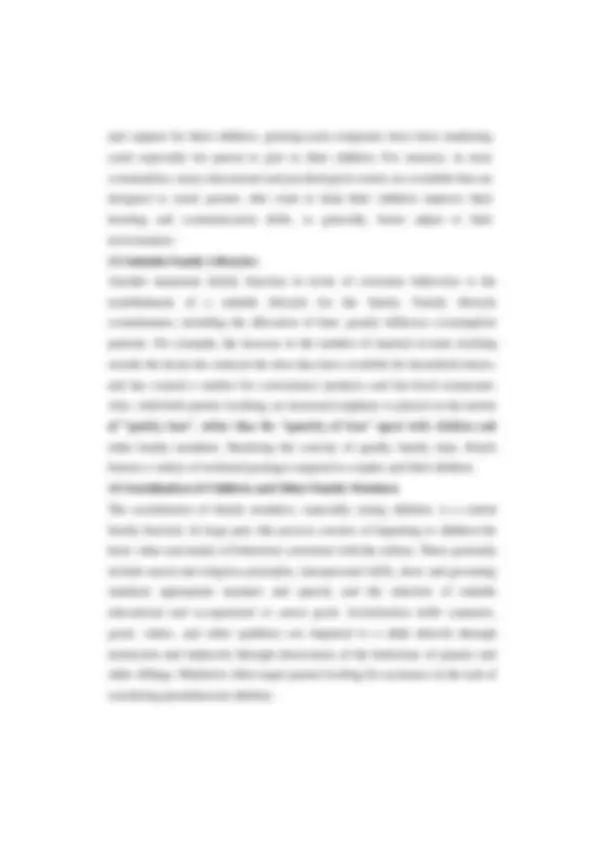
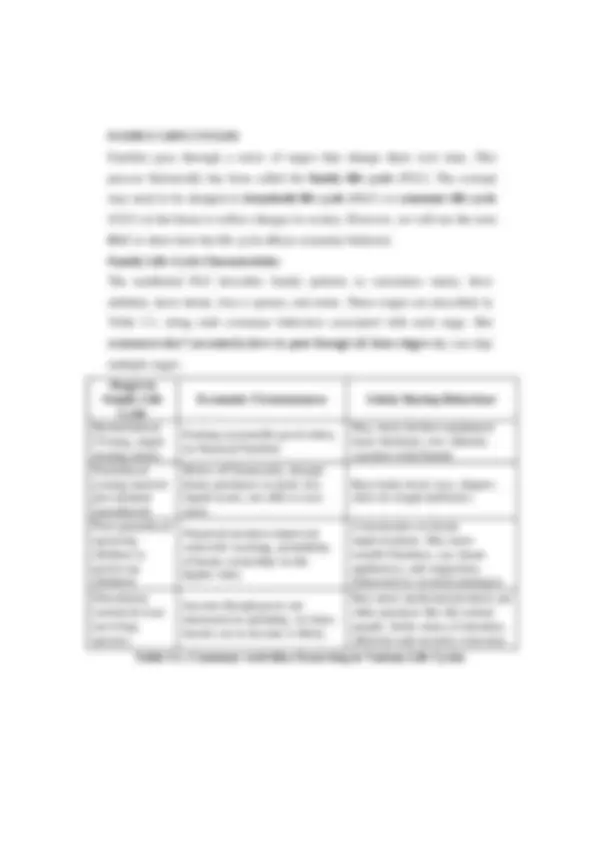
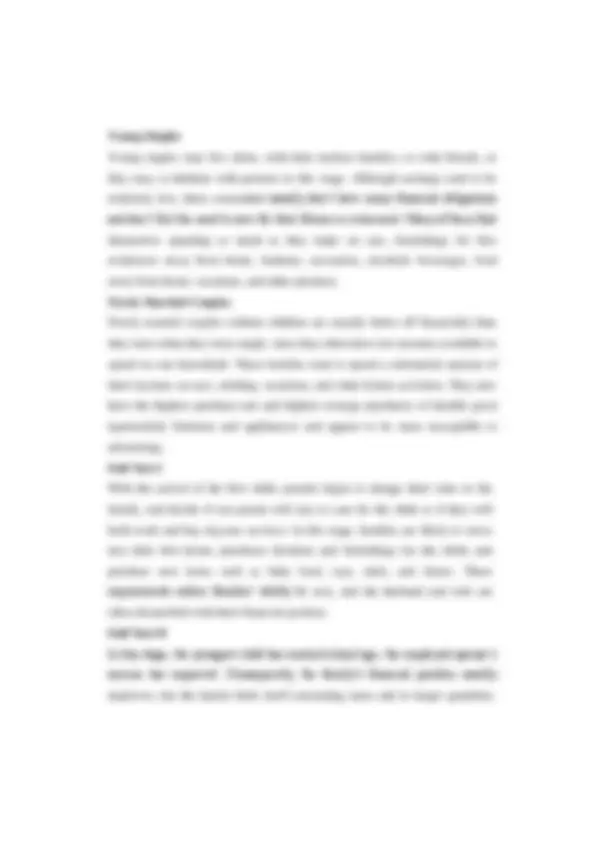
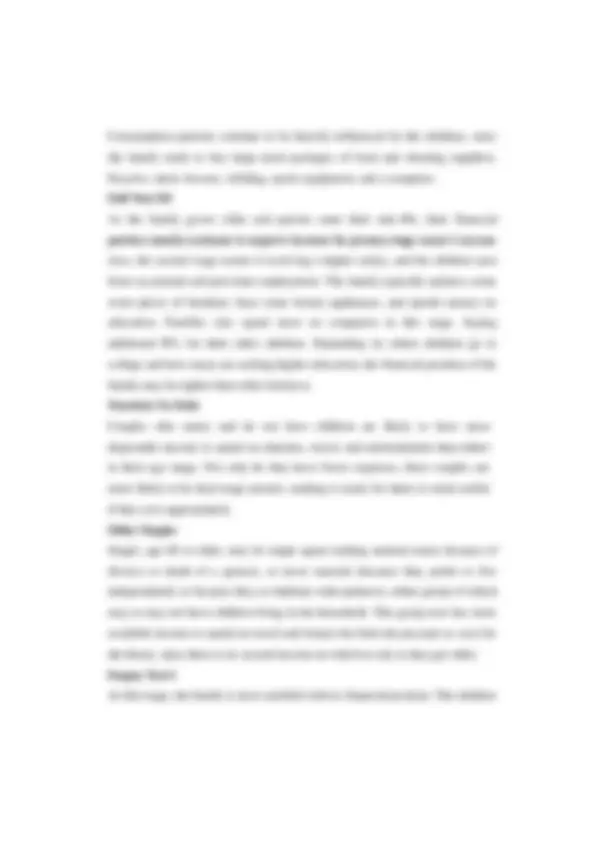
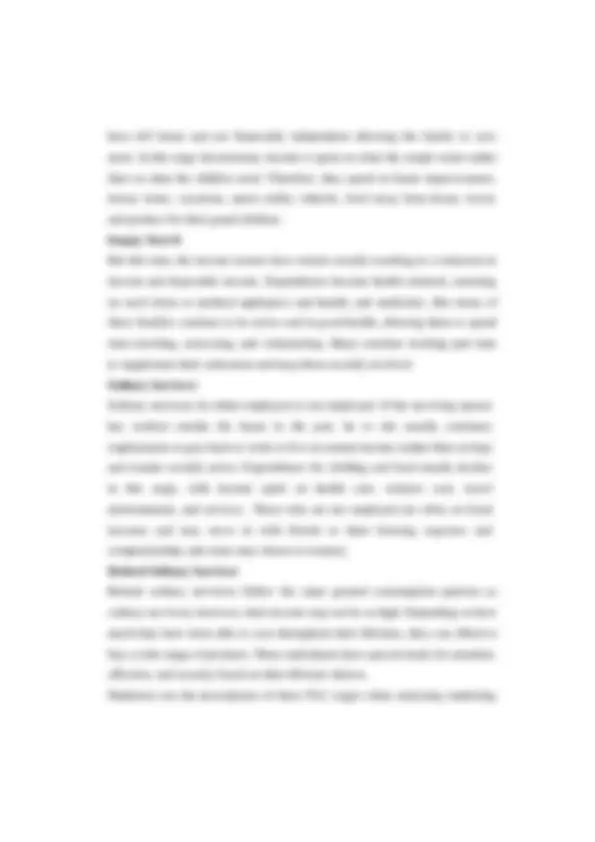
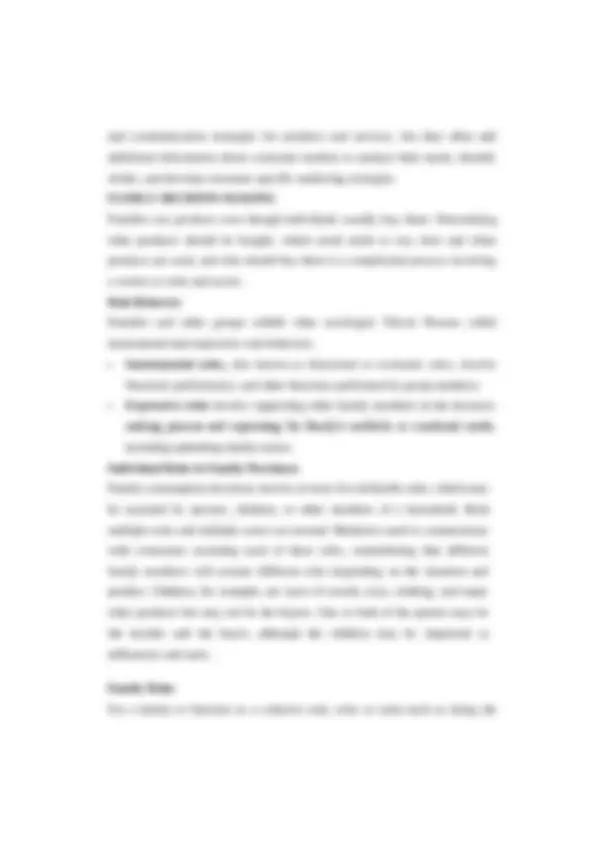
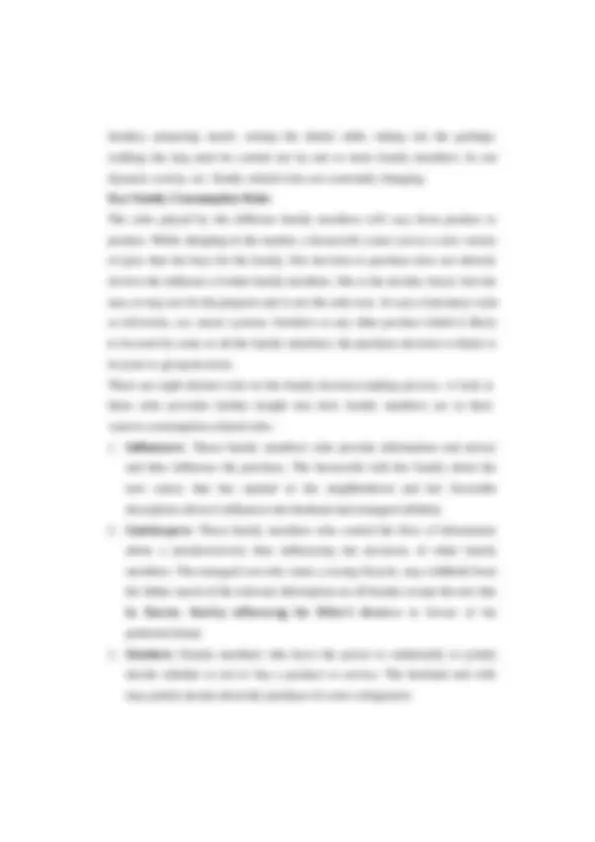
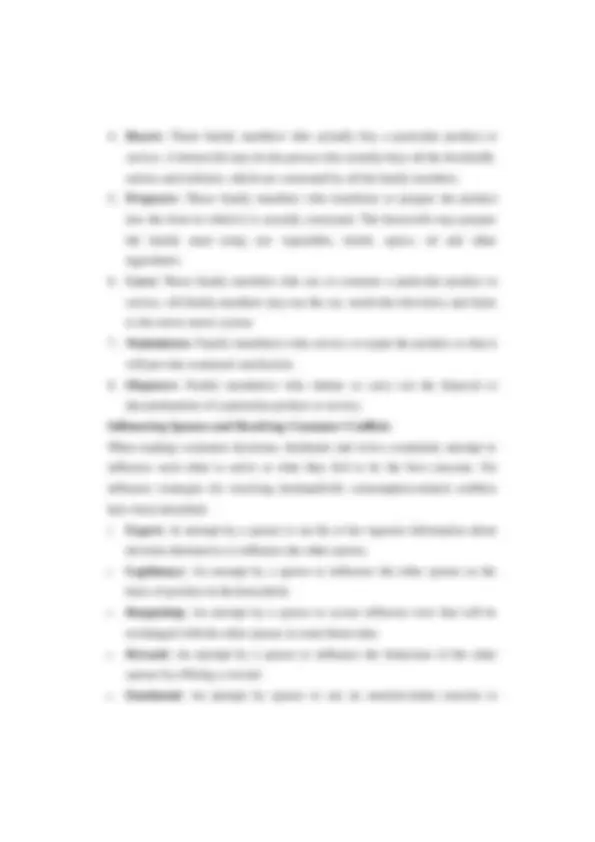
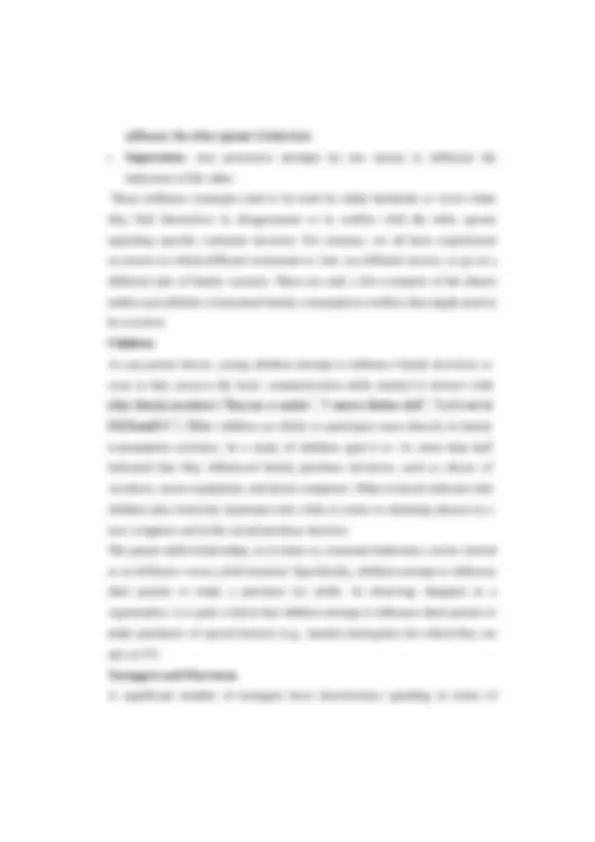
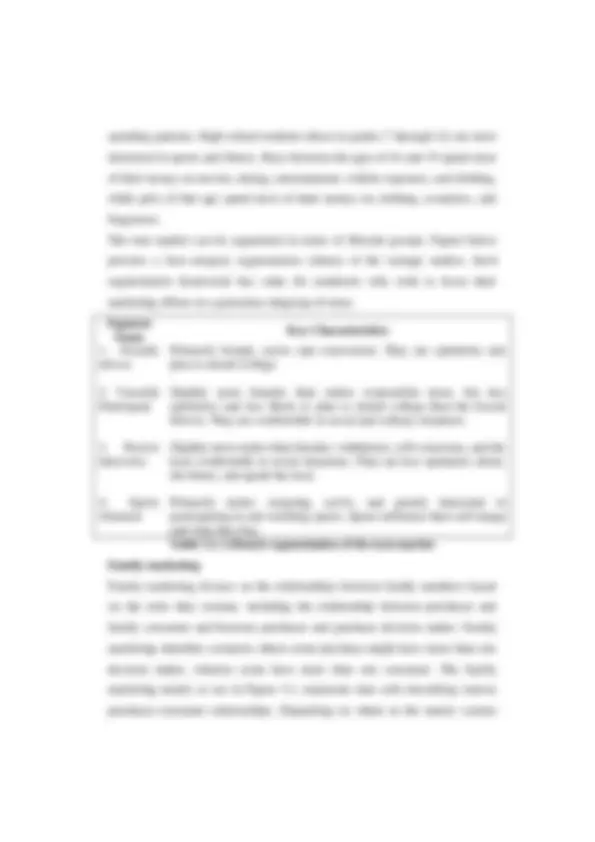
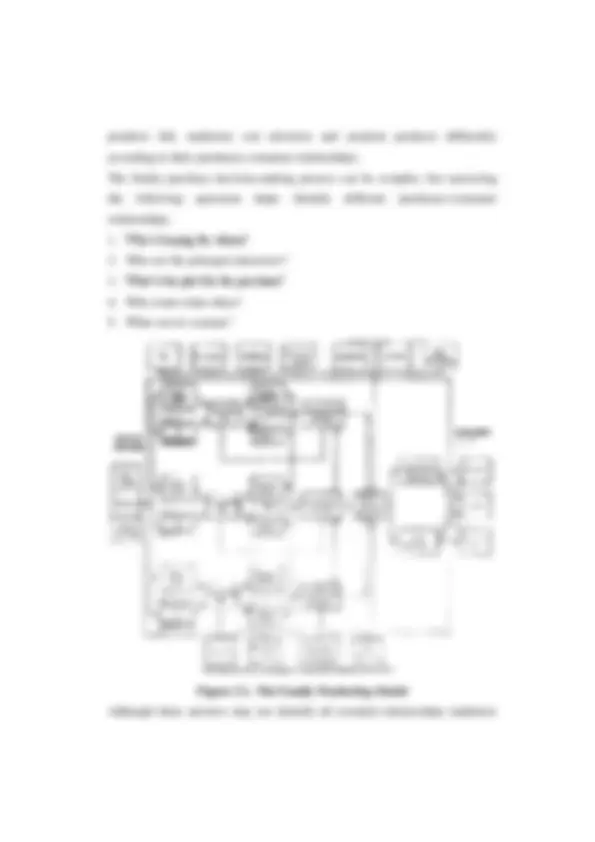
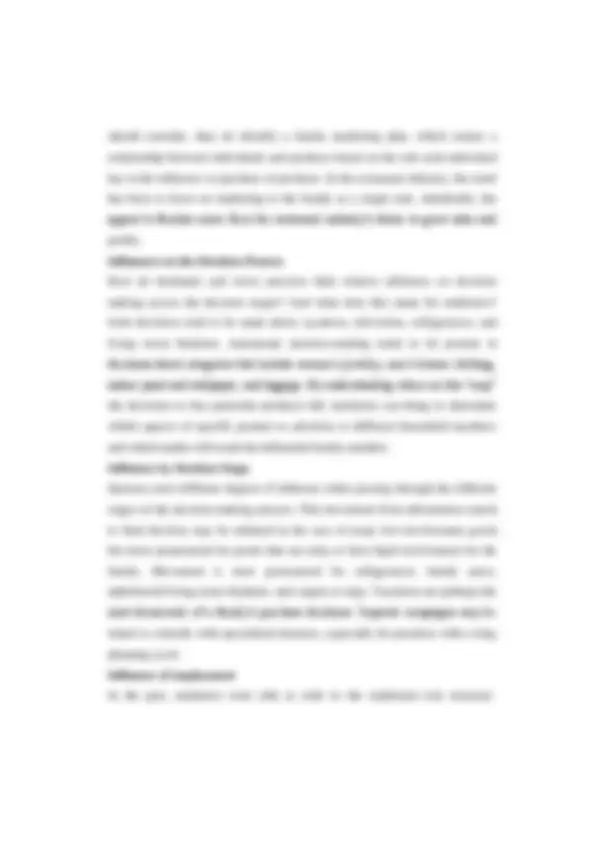
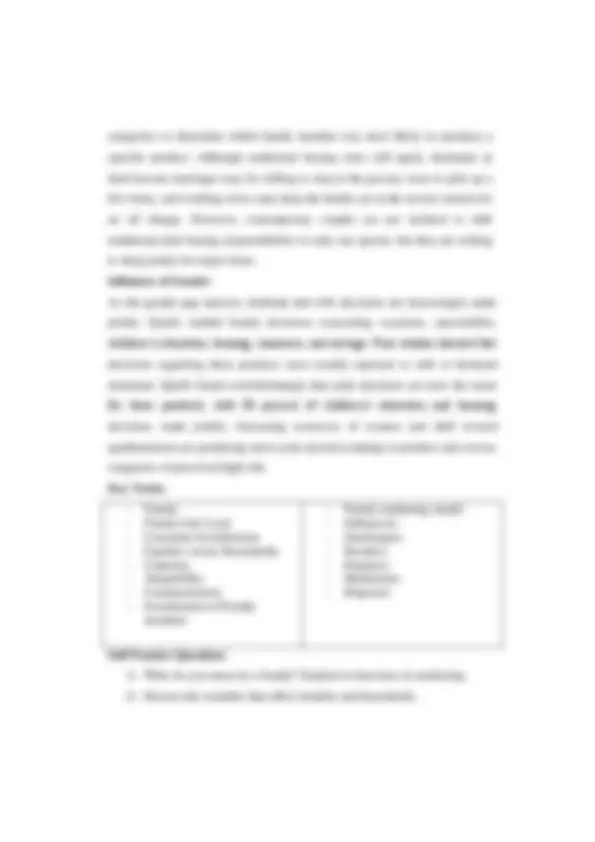
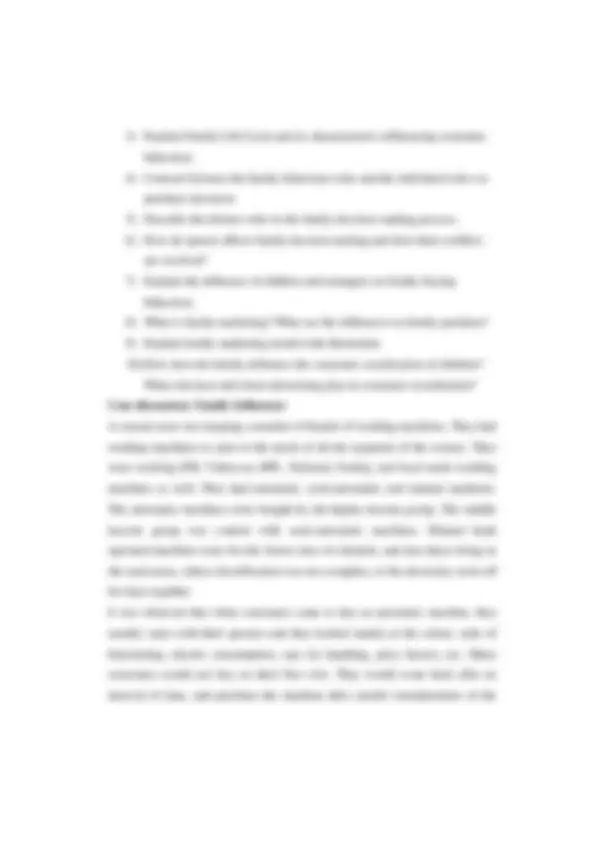
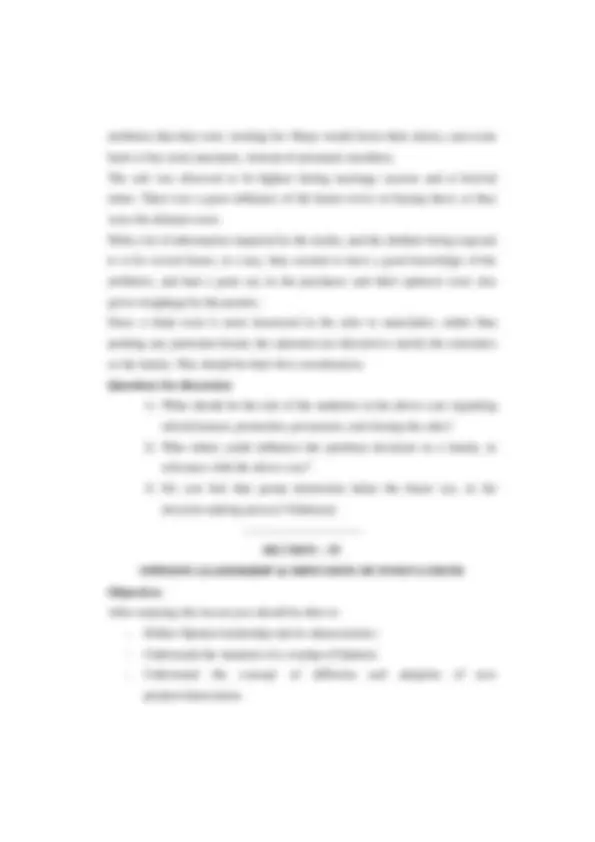
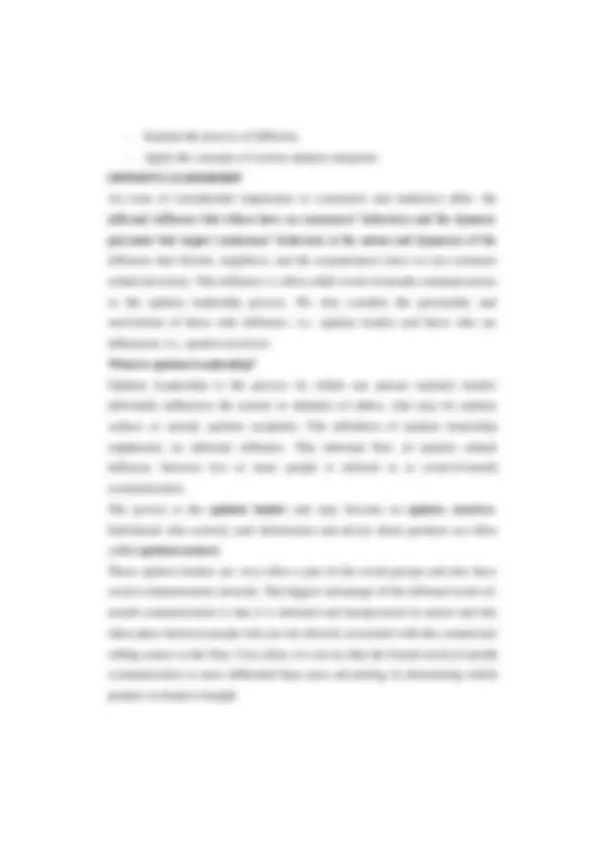
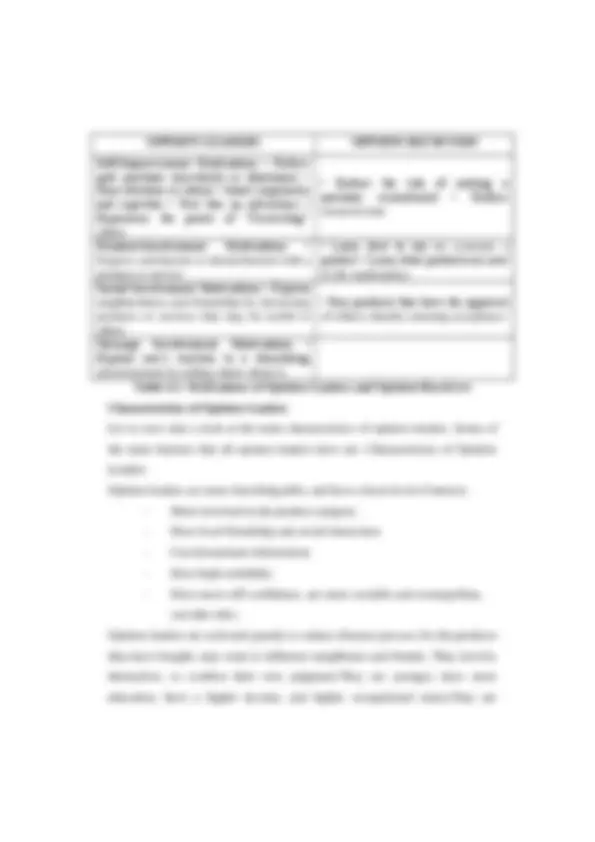
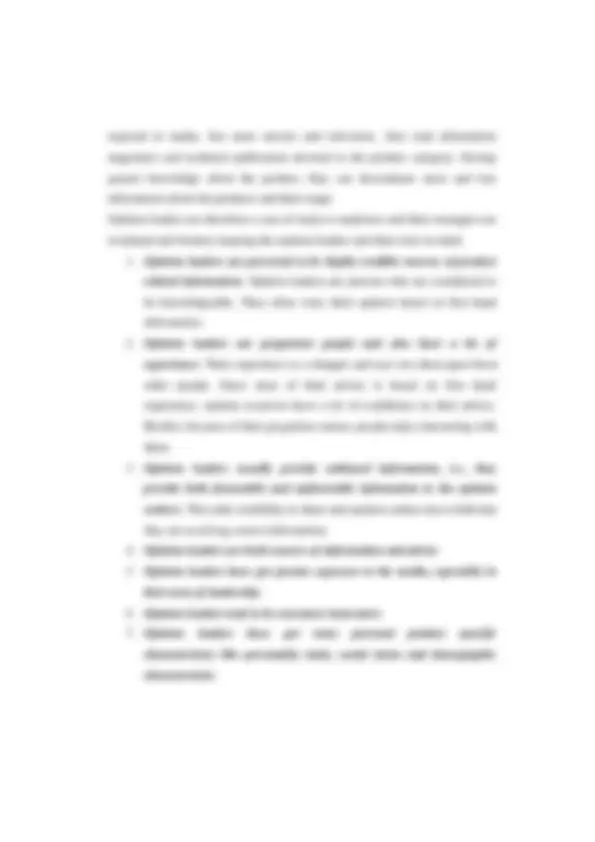
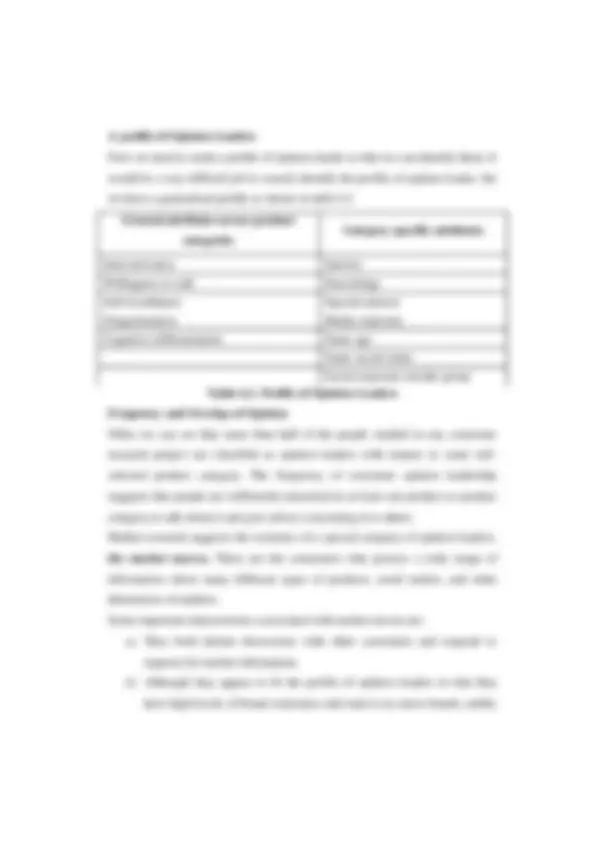



Study with the several resources on Docsity

Earn points by helping other students or get them with a premium plan


Prepare for your exams
Study with the several resources on Docsity

Earn points to download
Earn points by helping other students or get them with a premium plan
Community
Ask the community for help and clear up your study doubts
Discover the best universities in your country according to Docsity users
Free resources
Download our free guides on studying techniques, anxiety management strategies, and thesis advice from Docsity tutors
A document defining Consumer Behavior and its relationship with different branches of Management, namely, Marketing, Public Relations and Advertising.
Typology: Lecture notes
1 / 290

This page cannot be seen from the preview
Don't miss anything!





























































































After studying this chapter, you will be able to understand: The terms ‗consumer‘ , ‗customer‘, ‗industrial buyer‘ and ‗motives‘ Need of consumer behavioural study, differences between oganisational buying behaviour and consumer buying behaviour The nature and model of consumer involvement Consumer and industrial decision making process and decision rules Marketing implications of consumer behaviour Study of consumer behaviour modelling An Overview Consumer behaviour is comparatively a new field of study which evolved just after the Second World War. The sellers market has disappeared and buyers market has come up. This led to paradigm shift of the manufacturer‘s attention from product to consumer and specially focused on the consumer behaviour. The evaluation of marketing concept from mere selling concept to consumer- oriented marketing has resulted in buyer behaviour becoming an independent discipline. The growth of consumerism and consumer legislation emphasizes the importance that is given to the consumer. Consumer behaviour is a study of how individuals make decision to spend their available resources (time, money and effort) or consumption related aspects (What they buy? When they buy?, How they buy? etc.). The heterogeneity among people makes understanding consumer behaviour a challenging task to marketers. Hence marketers felt the need to obtain an in- depth knowledge of consumers buying behaviour. Finally this knowledge acted as an imperative tool in the hands of marketers to forecast the future buying behavior of customers and devise four marketing strategies in order to create long term customer relationship.
Consumer Behaviour It is broadly the study of individuals, or organisations and the processes consumers use to search, select, use and dispose of products, services, experience, or ideas to satisfy needs and its impact on the consumer and society. Customers versus Consumers The term ‗customer‘ is specific in terms of brand, company, or shop. It refers to person who customarily or regularly purchases particular brand, purchases particular company‘s product, or purchases from particular shop. Thus a person who shops at Bata Stores or who uses Raymonds clothing is a customer of these firms. Whereas the ‗consumer‘ is a person who generally engages in the activities - search, select, use and dispose of products, services, experience, or ideas. Consumer Motives Consumer has a motive for purchasing a particular product. Motive is a strong feeling, urge, instinct, desire or emotion that makes the buyer to make a decision to buy. Buying motives thus are defined as ‗those influences or considerations which provide the impulse to buy, induce action or determine choice in the purchase of goods or service. These motives are generally controlled by economic, social, psychological influences etc. Motives which Influence Purchase Decision The buying motives may be classified into two: i. Product Motives ii Patronage Motives i. Product Motives Product motives may be defined as those impulses, desires and considerations which make the buyer purchase a product. These may still be classified on the basis of nature of satisfaction: a) Emotional Product Motives b) Rational Product Motives
Knowledge of buyer motives of consumers is useful for marketers to anticipate market trends and formulate effective marketing strategies. Need for Study of Consumer Behaviour The study of consumer behaviour helps everybody as all are consumers. It is essential for marketers to understand consumers to survive and succeed in thes competitive marketing environment. The following reasons highlight the importance of studying consumer behaviour as a discipline. Importance in day to day life The purpose of studying a discipline is to help oneself to better appreciate its contributions. The reason to study consumer behaviour is because of the role it plays in the lives of humans. Most of the free time is spent in the market place, shopping or engaging in other activities. The extra time is usually passed in knowing and thinking about products and services, discussing with friends about them, and watching advertisements related to them. The usage of them significantly reveals our life styles. All these reasons suggest the need for study. However, the purpose may be to attend immediate and tangible reasons. Pertinence to Decision Making Consumer behaviour is said to be an applied discipline as some decisions are significantly affected by their behaviour or expected actions. The two perspectives that seek application of its knowledge are micro and societal perspectives. The micro perspectives involve understanding consumer for the purpose of helping a firm or organization to achieve its objectives. The people involved in this field try to understand consumers in order to be more effective at their tasks. Whereas the societal or macro perspective applies knowledge of consumers to aggregate- level faced by mass or society as a whole. The behaviour of consumer has significant influence on the quality and level of the standard of living.
Organisational Buyer versus Individual Buyer The obvious difference between industrial or institutional markets and consumer markets is that, instead of purchases being made for individual consumption industrial markets are made for business use. There are several factors that differentiate consumer markets and their buying behaviour from organizational market and their buying behaviour. The key factors of differentiation are: i Market Structure and Demand ii. Buyer Characteristics iii. Decision Process and Buying Patterns i Market Structure and Demand : The distinguishing factors of market structure and demand are as follows: In organizations buyers are more geographically concentrated than consumer markets. Organisational buyers are fewer in number but they are bulk buyers compared to individual buyers. Organisational buyer markets are either vertical or horizontal. In vertical structures they cater only one or two industries, whereas in horizontal structure the buyer base is too broad. Organsational demand is derived from consumer demand. The nature of the demand is fluctuational and inelastic. ii. Buyer Chararteristics: The distinguishing factors of buyer characteristics are as follws: Many individuals or group involvement is seen in decision making process. Organisational buyers are quite knowledgeable and professional. The buying motive is mostly rational than individual buyer. iii. Decision Process and Buying Patterns The major differences are as follows: In organizational buying lot of formalities like proposals, quotations, procedures are to be followed unlike consumer buying.
Product Factors The consumer involvement grows as the level of perceived risk in the purchase of a good or service increases. It is likely that consumers will feel more involved in the purchase of their house than in the purchase of tooth paste, it is a much riskier purchase. Product differentiation affects involvement. The involvement increases as the number of alternatives that they have to choose from increases. This may be due to the fact that consumers feel variety which means greater risk. The pleasure one gets by using a product or service can also influence involvement. Some products are a greater source of pleasure to the consumer than others. Tea and coffee have a high level of hedonic (pleasure) value compared to, say household cleaners. Hence the involvement is high. Involvement increases when a product gains public attention. Any product that is socially visible or that is consumed in public, demands high involvement. For example, involvement in the purchase of car is more than the purchase of household items. Situational Factors The situation in which the product is brought or used can generate emotional involvement. The reason for purchase or purchase occasion affects involvement. For example, buying a pair of socks for yourself is far less involved than buying a gift for a close friend. Social pressure can significantly increase involvement. One is likely to be more self conscious about the products and brands one looks at when shopping with friends than when shopping alone. The need to make a fast decision also influences involvement. A consumer who needs a new refrigerator and sees a ‗one- day- only sale‘ at an appliances retailer does not have the time to shop around and compare different brands and prices. The eminence of the decision heightens involvement.
The involvement is high when the decision is irrevocable, for example when the retailer does not accept return or exchange on the sale items. Thus involvement may be from outside the individual, as with situational involvement or from with in the individual as with enduring involvement. It can be induced by a host of personal-product-and situation related factors, many of which can be controlled by the marketer. It affects the ways in which consumers see, process, and send information to others. TYPES OF INVOLVEMENT The two types of involvement are: A) Situation B) Enduring Involvement has various facets of consumer behaviour such as search for information, information processing, and information transmission. Situational Involvement Situational involvement is temporary and refers to emotional feelings of a consumer, experiences in a particular situation when one thinks of a specific product. Enduring Involvement Enduring involvement is persistent over time and refers to feelings experienced toward a product category across different situations. For example, holiday- makers renting a resort for their trip are highly involved in their choice, but their involvement is temporary. Whereas involvement of a person whose hobby is bike racing endures overtime and affects his responses in any situation related to pre-purchase, purchase and post- purchase of sport bikes. It is observed that involvement is triggered by special situation in the case of holiday makers, but in the second case, in comes from, and is a part of the consumer. The contrast between situational and enduring involvement is important. When marketers measure involvement they examine the extent to which it can be induced by the product or selling situation. After noticing the type of
case marketers need to provide information cues to help the consumers to retrieve information from memory. But when the target is low involvement consumers, marketers should make the necessary information as accessible as possible at the time of selection and buying of the product. Extent of Cognitive Elaboration Highly involved customers think more about product choices than consumers with low involvement. Their deep understanding involves support arguments and / or counter arguments. That is, highly involved consumers tend to generate cognitive responses either in support of the product information or against the information provided by the marketers. If we talk of the previous example, marketing baby food products, the product all though effective may have significant side effects like obesity. Educated parents are likely to give this the great deal of thought before giving it to their children. To ensure that the parents generate positive thoughts, the marketers have to mention a quality argument that the product benefits outweigh its negative effects. If the arguments are less informed and not persuasive, it is likely to produce negative thoughts resulting in an unfavourable attitude towards the product. Level of Emotional Arousal Highly involved consumers are more emotional than less involved consumers. The highly involved react more strongly to the product-related information which may act for or against marketers. This is because the negative interpretation is likely to be exaggerated more number of times causing the customers to reject the product. Information Transmission Transmission of information is the extent to which greatly involved customers send information about the product to others. This is done usually through word- of-mouth communication. The researchers have shown that if consumers are
highly involved they talk about the product frequently than others. Satisfied consumers are likely to speak favourable about the product, while unsatisfied speak negatively. Therefore, marketers catering to highly involved consumers should attempt to enhance consumer satisfaction and decrease dissatisfaction. For example, customer happy with ONIDA television communicates the same to others through word-of-mouth. MODELS OF CONSUMER INVOLVEMENT There are four prominent models of consumer behaviour based on involvement which help marketers in making strategic decision particularly in marketing communication related strategies. The four models are as follows.
Low Involvement / Low Feeling The purchases in this quadrant are motivated primarily by the need to satisfy personal tastes, many of which are influenced by self-image. Products like news paper, soft drinks, Liquor etc., fall under this category. Group influences often lead to the purchase of these items. The strategy model is do-feel-learn. It helps marketers to promote products through reference groups and other social factors. Low Involvement / Low Thinking It involves less in thinking and more of habitual buying. Products like stationery, groceries, food etc., fall under this category. Over a period of time any product can fall in this segment. The role of information is to differentiate any ‗point of difference‘ from competitors. Brand loyalty may result simply from the habit. The strategy model is do-learn-feel. It suggests that marketers induce trial through various sales promotion techniques. Level of Message Processing Model Consumer attention to advertisements or any other marketing communication depends on four levels of consumer involvement: Pre- attention, focal attention, comprehension and elaboration. Each calls for different level of message processing. Pre-attention demands only limited message processing - the consumer only identifies the product. Focal attention involves basic information as product name on use. In comprehension level the message is analysed, through elaboration the content of the message is integrated with other information that helps to build attitude towards the product. It is suggested that marketers make advertisements which can induce elaboration. Product versus Brand Involvement Model Sometimes consumer is involved with the product category but may not be necessarily involved with the particular brand or vice versa. For example,
house wives know more about kitchen ware but may not know the details of various brands. According to the consumer involvement in either product or particular brand, consumer types can be divided into four categories as described below. Brand Loyals : These consumers are highly involved with both the product category and with particular brand. For example, cigarette smokers and paper readers fall in this category. Information Seekers : These buyers are involved more with product category but may not have preferred brand. They are likely to see information to decide a particular brand. For examples, air-conditioners and washing machine buyers fall under this category. Routine Brand Buyers : These consumers are not highly involved with the product category but may be involved with the particular brand with in that category. They have low emotional attachment with the product category and tied mainly with their brand. For example users of particular brand of soap for years, regular visitors to particular restaurant fall in this category. Brand Switching : Consumers in this category have no emotional attachment either with product category or any brand with in it. They typically respond to price. For example stationery items, fashion products come under this category. Measuring Involvement on Semantic Differential Scale(Activity)
mvjft8gjbmjfufhccudnfncudncucfmcvjfimicbxtdbxc
1. Need Recognition When a person has an unsatisfied need, the buying process begins to satisfy the needs. The need may be activated by internal or external factors. The intensity of the want will indicate the speed with which a person will move to fulfill the want. On the basis of need and its urgency, forms the order of priority. Marketers should provide required information of selling points. 2. Information Search Identified needs can be satisfied only when desired product is known and also easily available. Different products are available in the market, but consumer must know which product or brand gives him maximum satisfaction. And the person has to search out for relevant information of the product, brand or location. Consumers can use many sources e.g., neighbors, friends and family. Marketers also provide relevant information through advertisements, retailers, dealers, packaging and sales promotion, and window displaying. Mass media like news papers, radio, and television provide information. Now a days internet has become an important and reliable source of information. Marketers are expected to provide latest, reliable and adequate information. 3. Evaluation of Alternatives This is a critical stage in the process of buying. Following are important elements in the process of alternatives evaluation a)A product is viewed as a bundle of attributes. These attributes or features are used for evaluating products or brands. For example, in washing machine consumer considers price, capacity, technology, quality, model and size. b)Factors like company, brand image, country, distribution network and after- sales service also become critical in evaluation. c)Marketers should understand the importance of these factors to consumers of these factor to consumers while manufacturing and marketing their products.
4. Purchase Decision Outcome of the evaluation develops likes and dislikes about alternative products or brands in consumers. This attitude towards the brand influences a decision as to buy or not to buy. Thus the prospective buyer heads towards final selection. In addition to all the above factors, situational factors like finance options, dealer terms, falling prices etc., are also considered. 5. Post- Purchase Behaviour This behaviuor of consumer is more important as for as marketer is concerned. Consumer gets brand preference only when that brand lives up to his expectation. This brand preference naturally repeats sales of marketer. A satisfied buyer is a silent advertisement. But, if the used brand does not yield desired satisfaction, negative feeling will occur and that will lead to the formation of negative attitude towards brand. This phenomenon is called cognitive dissonance. Marketers try to use this phenomenon to attract user of other brands to their brands. Different promotional-mix elements can help marketers to retain his customers as well as to attract new customers. CONSUMER DECISION RULES These are generally referred to as information processing strategies. These are procedures that help consumers to evaluate various options and reduce the risk of making complex decisions by providing the guidelines. Decision rules have been broadly classified into two categories : 1. Compensatory Decision Rules : Consumers evaluate brand or model in terms of each attribute and computes a weighted score for each brand. The computed score reflects the brand‘s relative merit as a potential purchase choice. The assumption is that consumer will select the brand that scores highest among alternative brands. The unique feature of this rule is that it balances the positive evaluation of a brand on one attribute to balance out a negative evaluation on
1.Extensive Problem Solving ( EPS ) : When consumers buy a new or unfamiliar product it usually involves the need to obtain substantial information and a long time to choose. They must form the concept of a new product category and determine the criteria to be used in choosing the product or brand. 2.Limited Problem Solving ( LPS ) : Sometimes consumers are familiar with both product category and various brands in that category, but they have not fully established brand preferences. They search for additional information helped them to discriminate among various brands. 3.Routine Problem Solving ( RPS ) : When consumers have already purchased a product or brand , they require little or no information to choose the product. Consumers involve in habitual and automatic purchases.
The basic belief of marketing-oriented company is that the customer is the hub around which the business revolves. Therefore, understanding what makes people in general buy and what makes your customer in particular buy is a vital part of business success. Market itself means – customer, around whom all marketing strategies are formulated and implemented. In order to meet competition at the market place, the marketing managers are using various methods to add value to the final product which will reach the hands of the consumers. It means in ever changing marketing environment, there is a growing concern or awareness among marketers to go for a careful study of the consumer behaviour around which all marketing activities are made. Following are the key marketing implications of consumer behaviour.
Understanding the consumer behaviour is the basic for marketing strategy formulation. Consumers reaction to this strategy determines the organization success or failure. In this competitive environment Organisations can survive only by offering more customer value - difference between all the benefits derived from a total product and all the costs of acquiring those benefits - than competitors. Providing superior customer value requires the organization to do a better job of anticipating and reacting to the customer needs than the competitor. Marketing strategy is basically the answer to the question: How will company provide superior customer value to its target market? The answer to this question requires formulation of marketing - mix – product, price, place and promotion